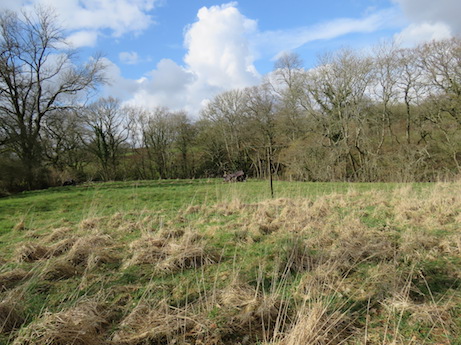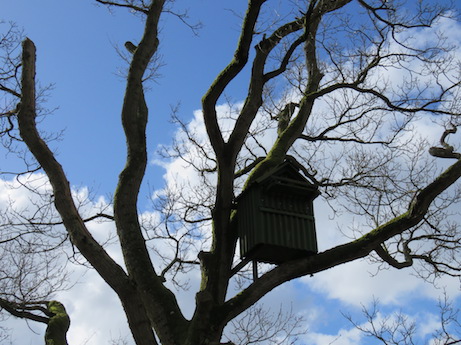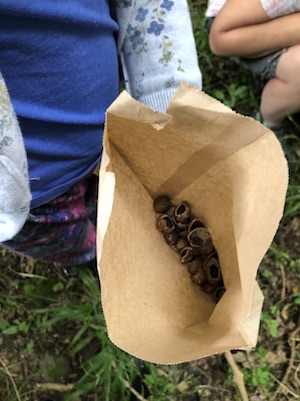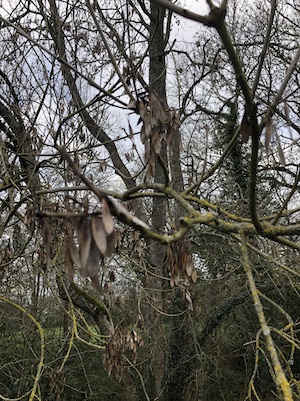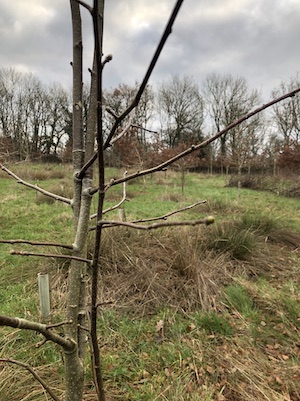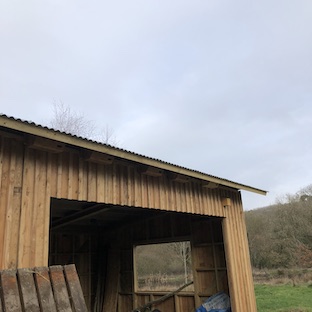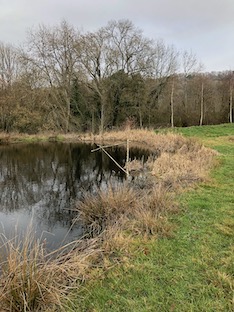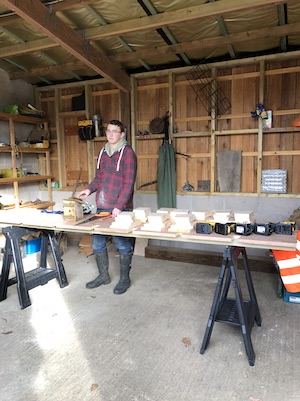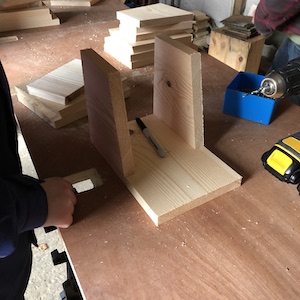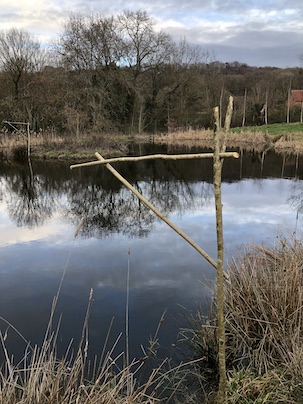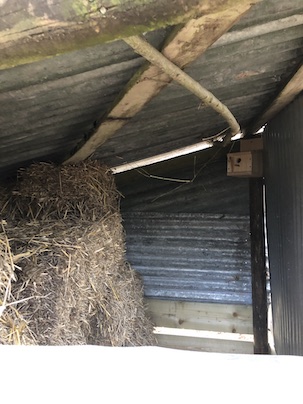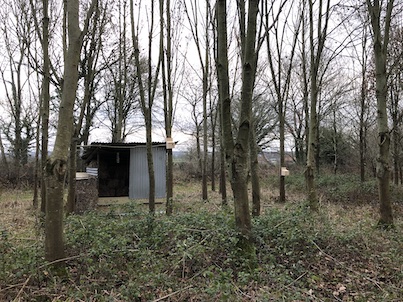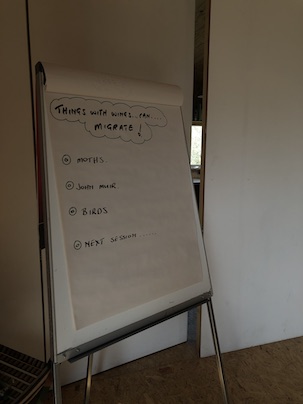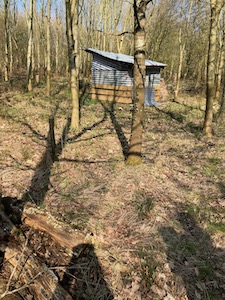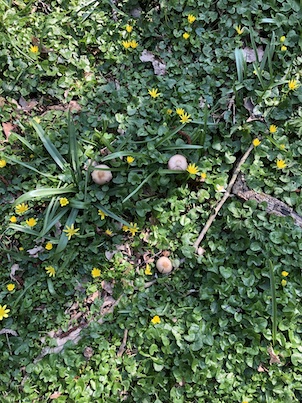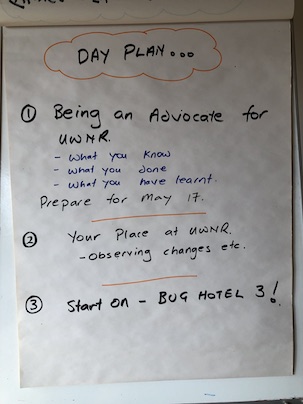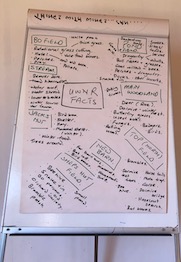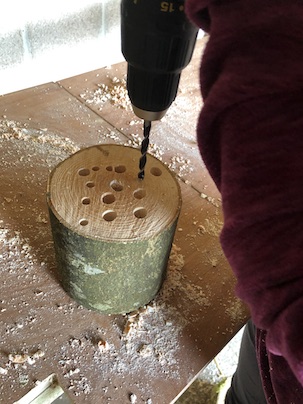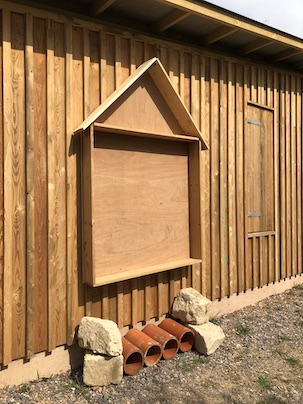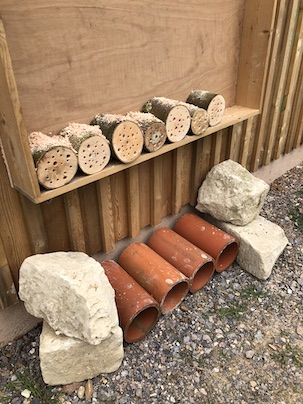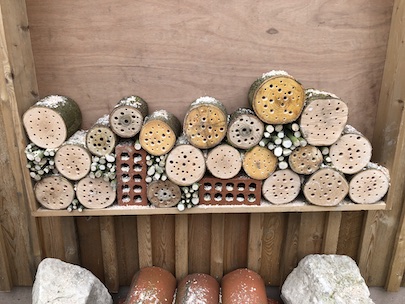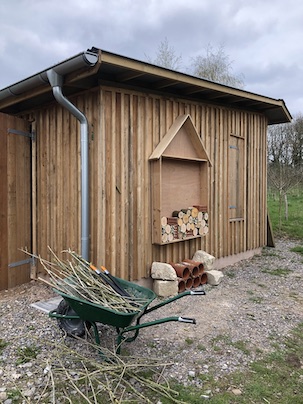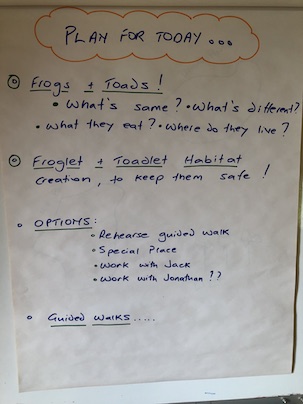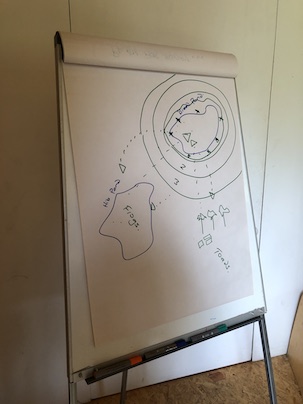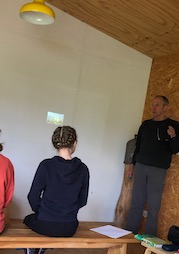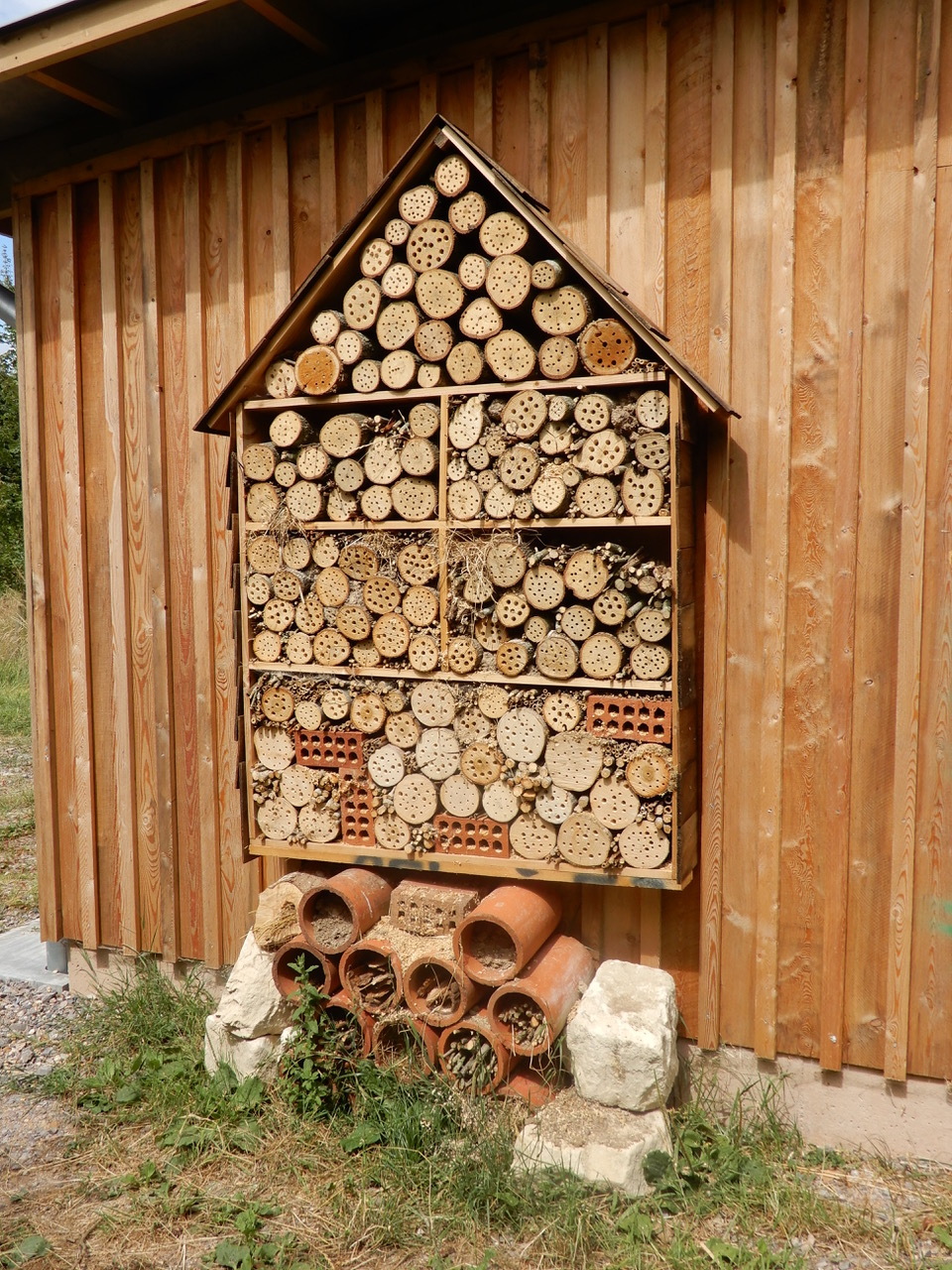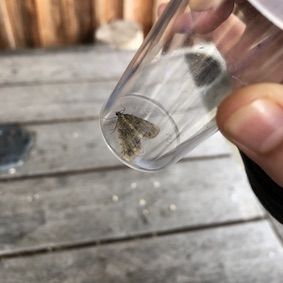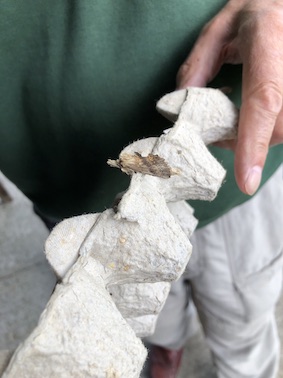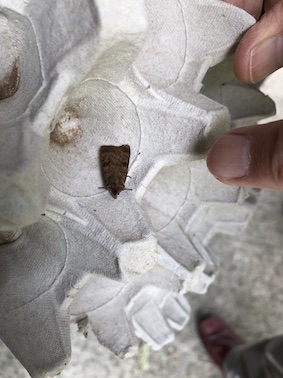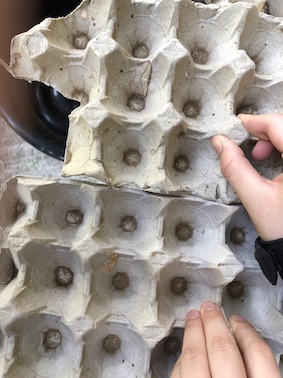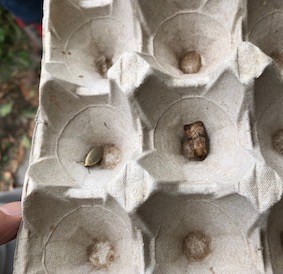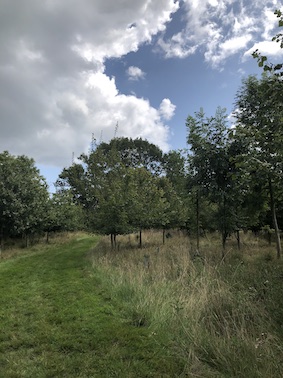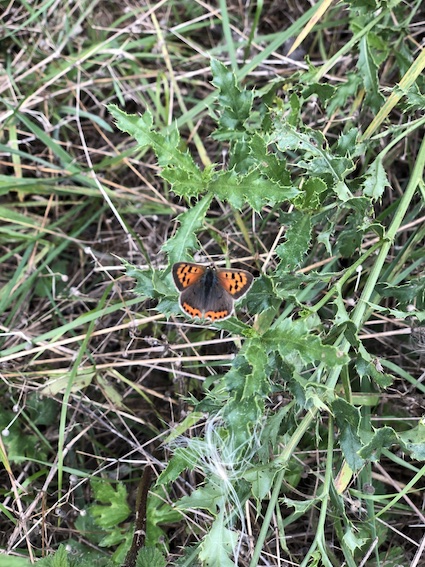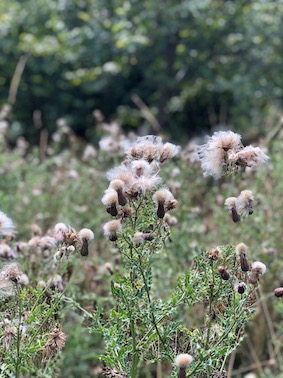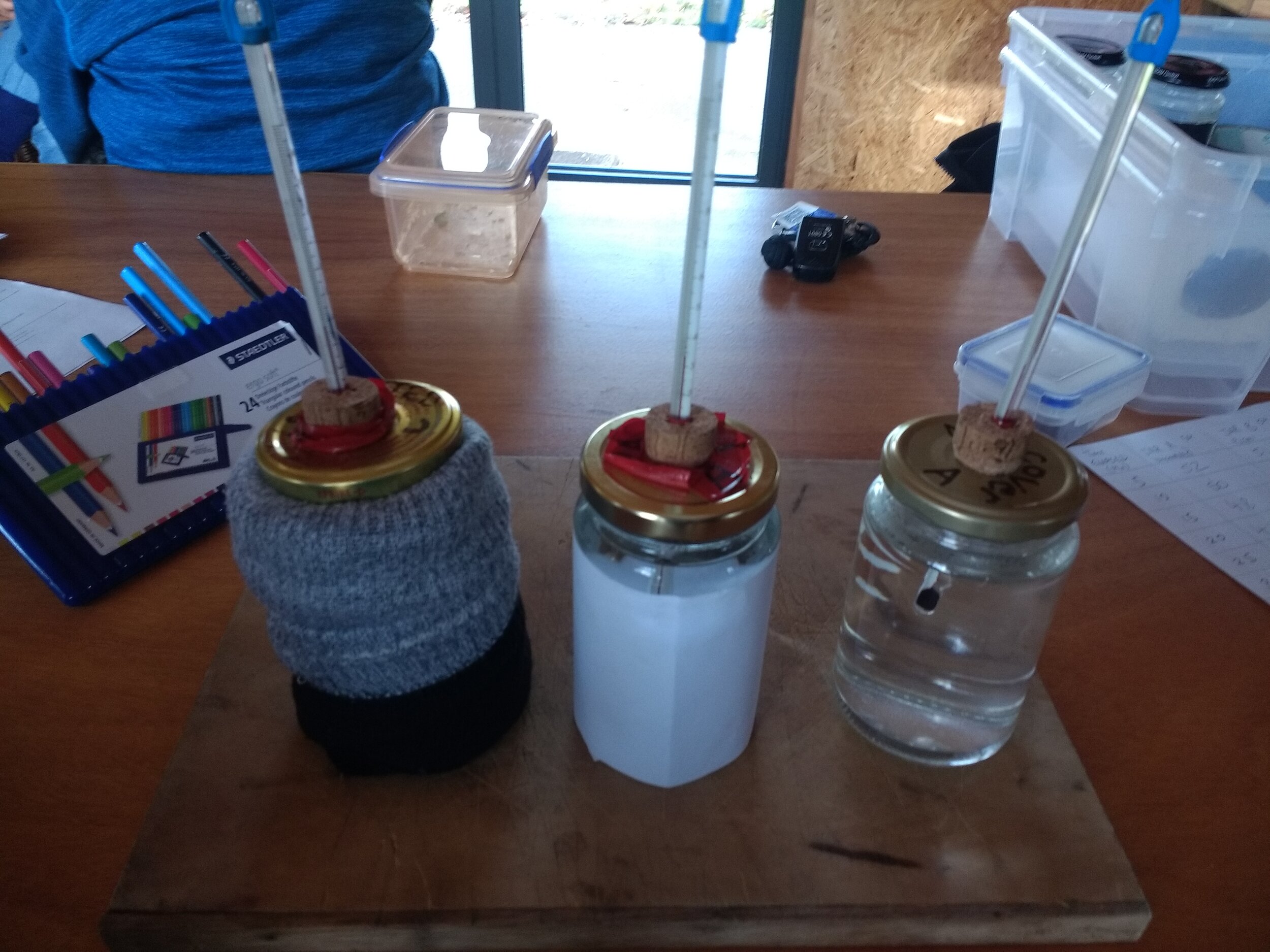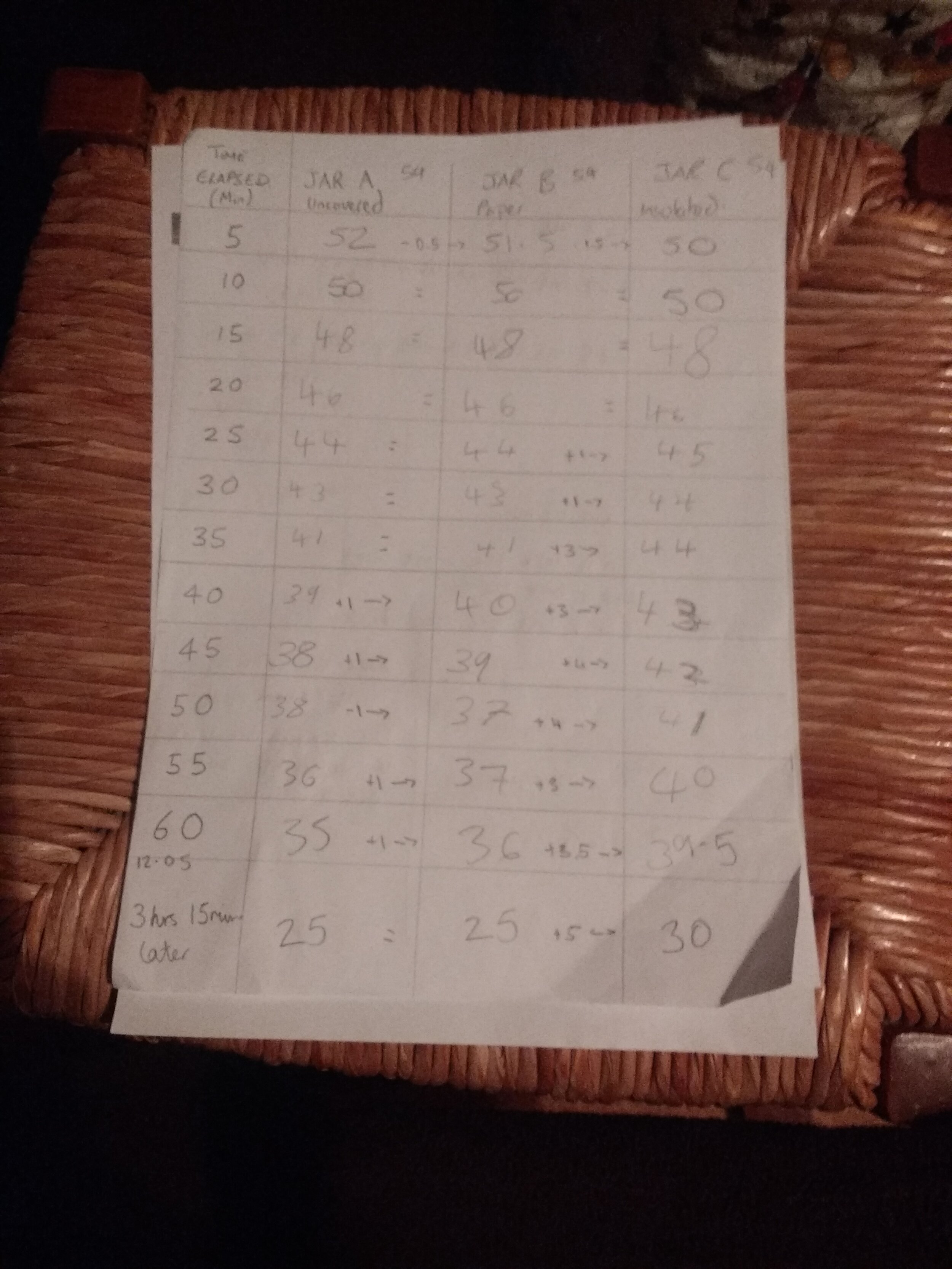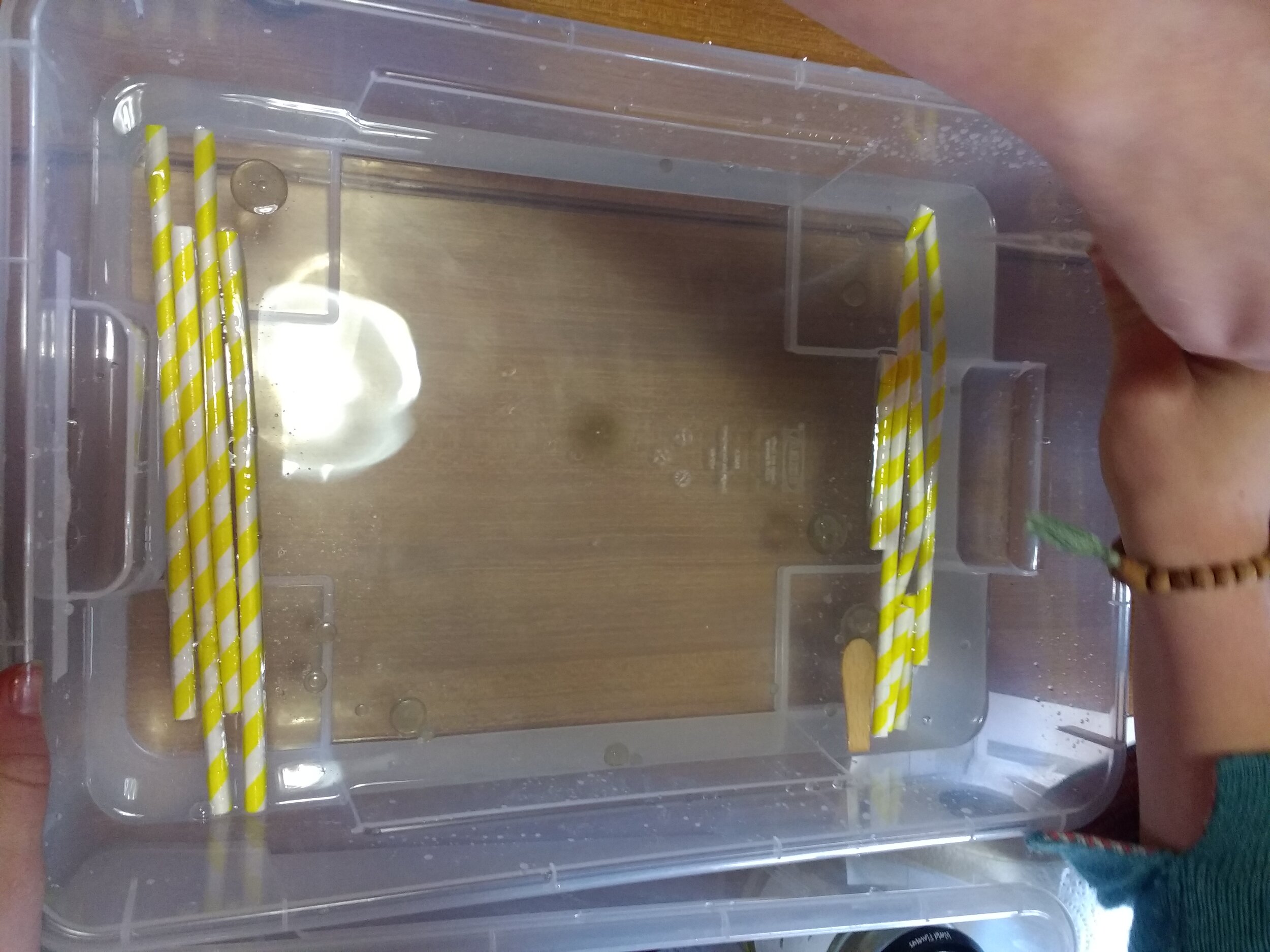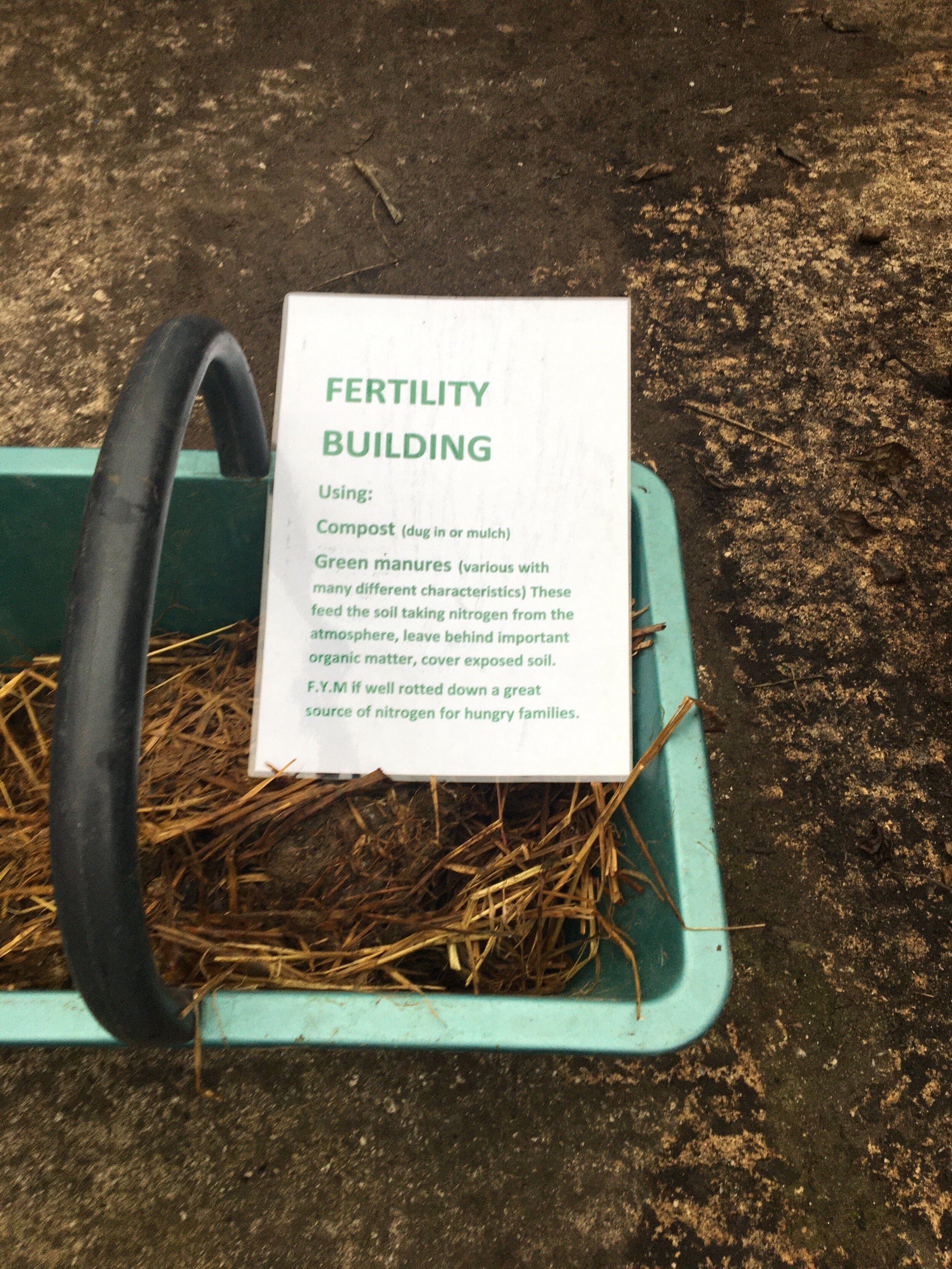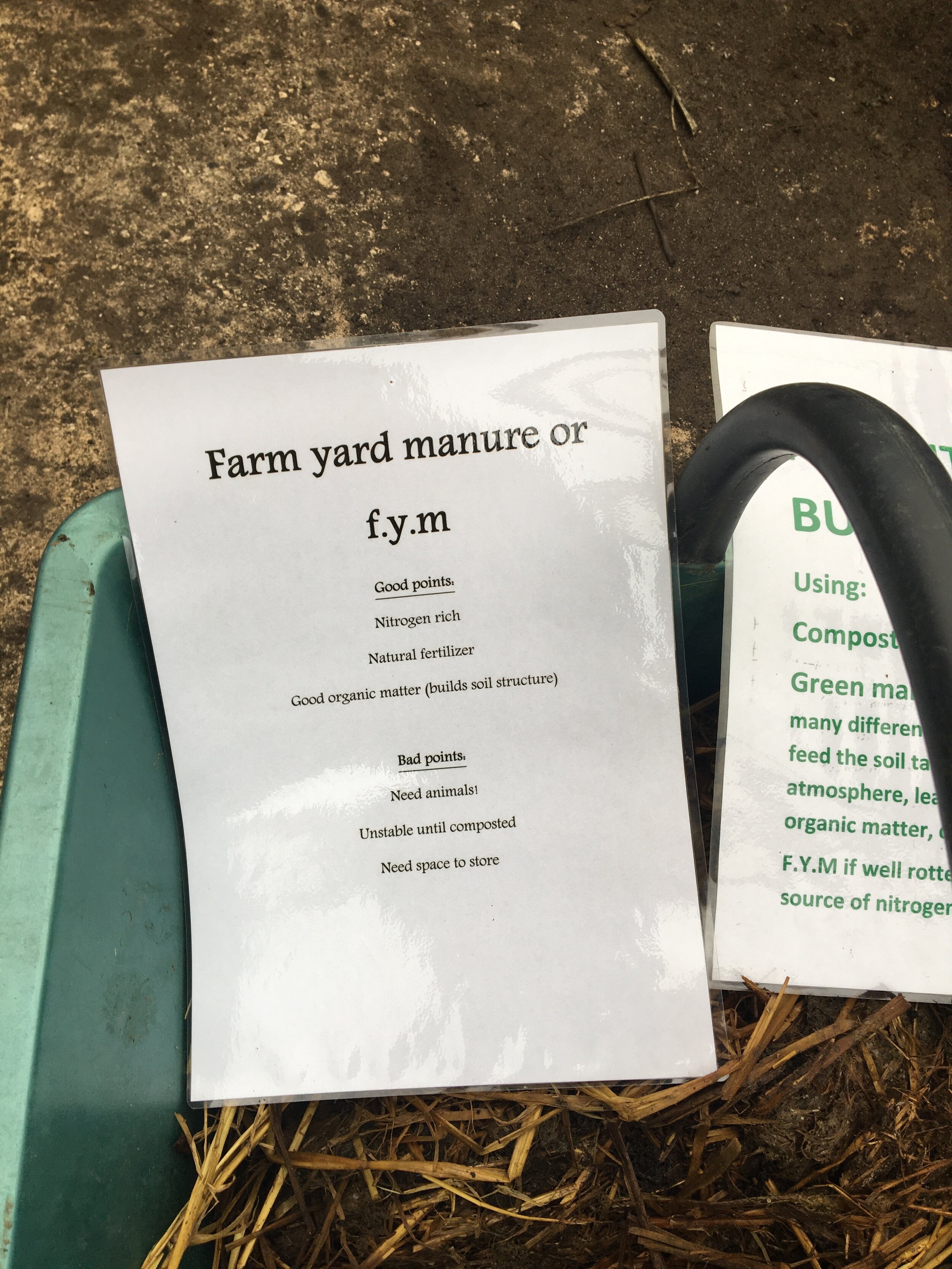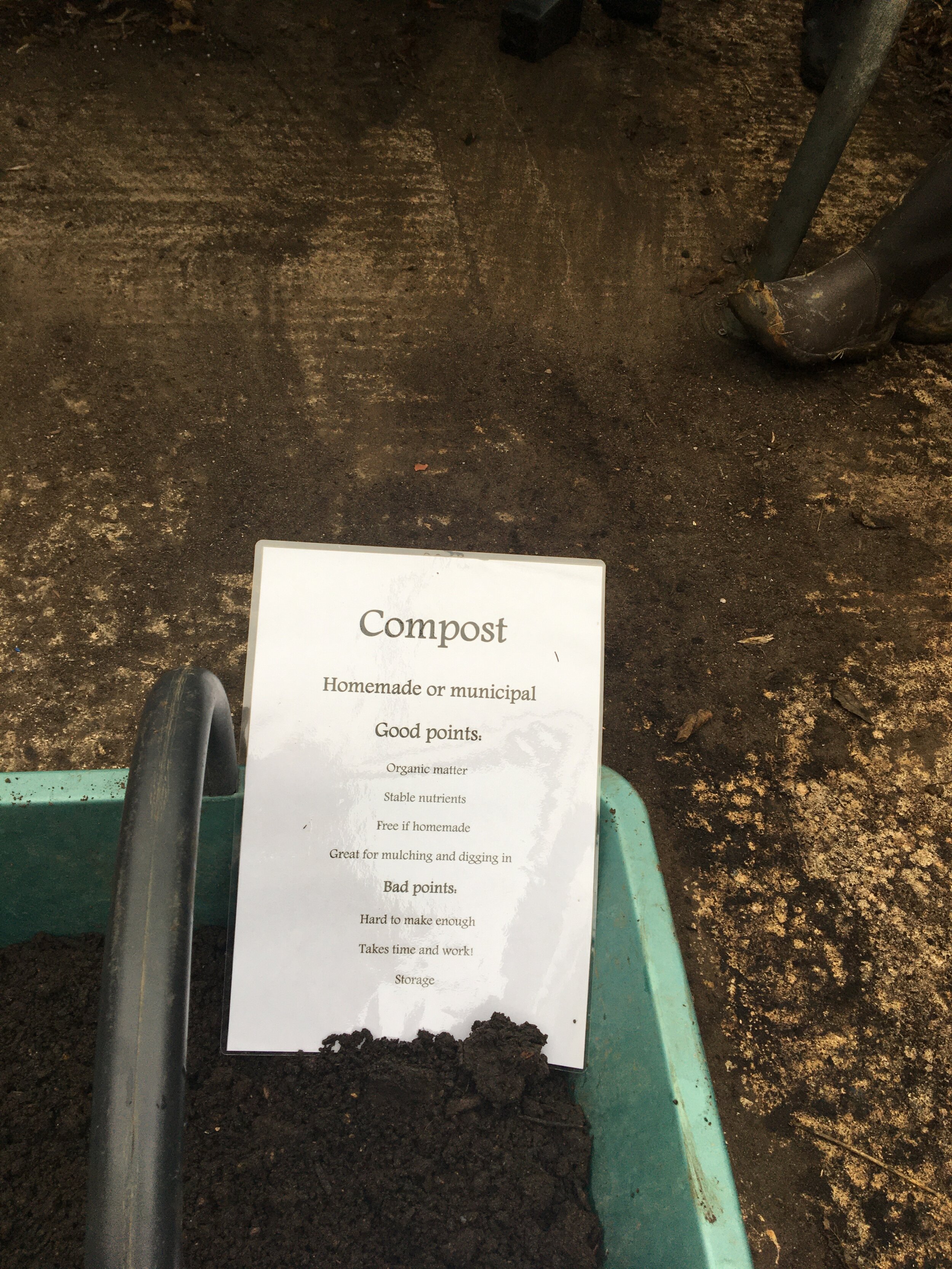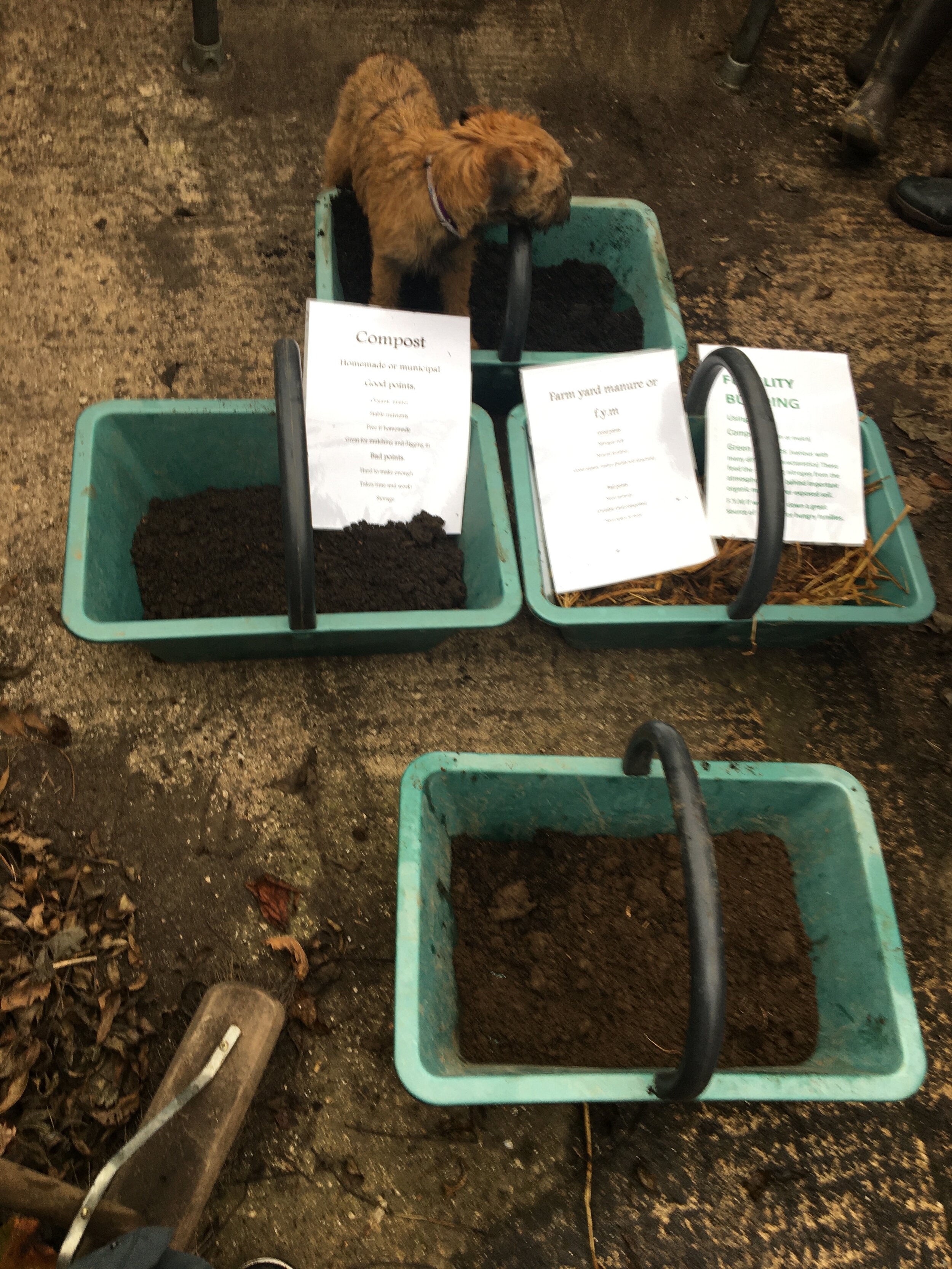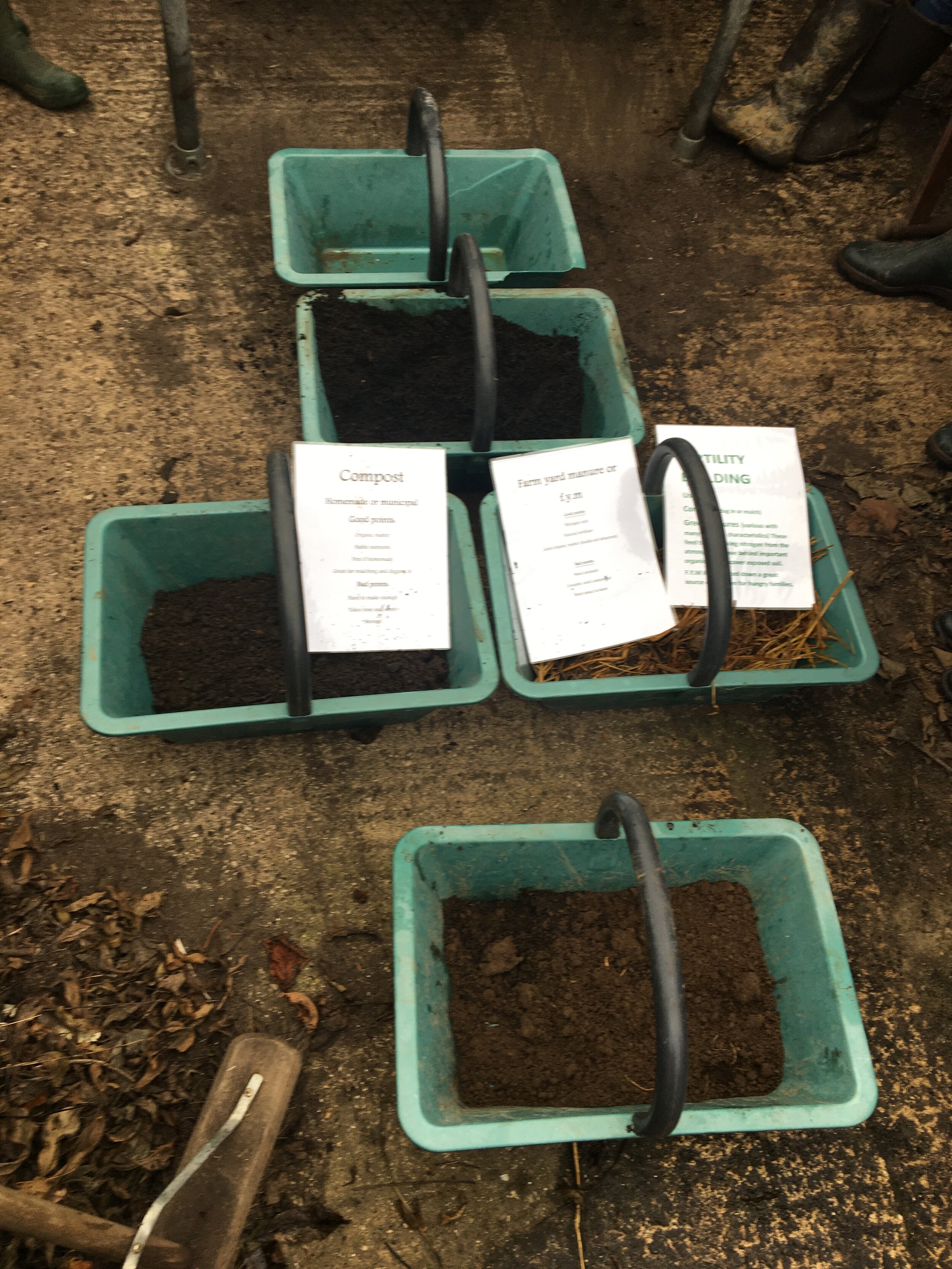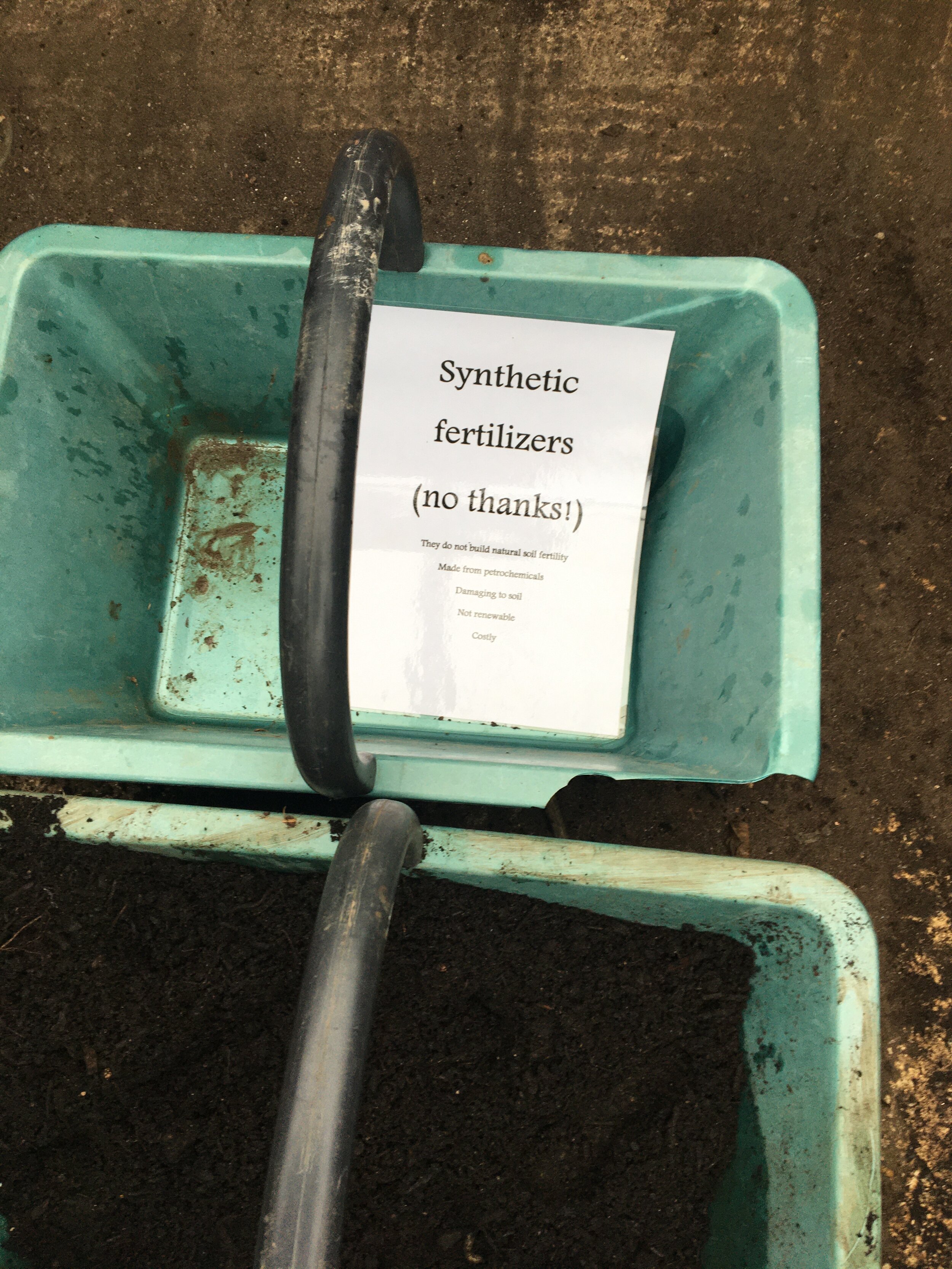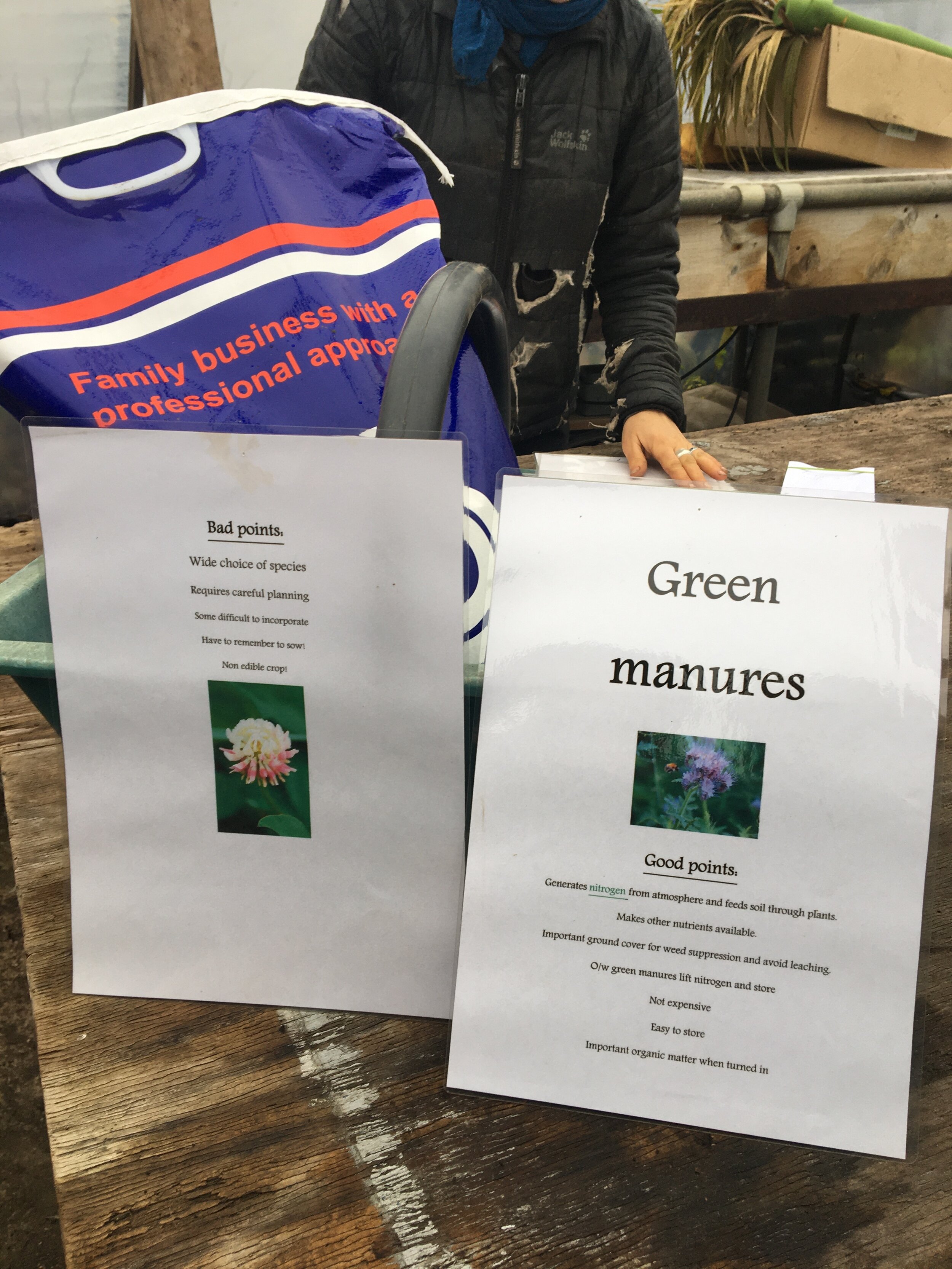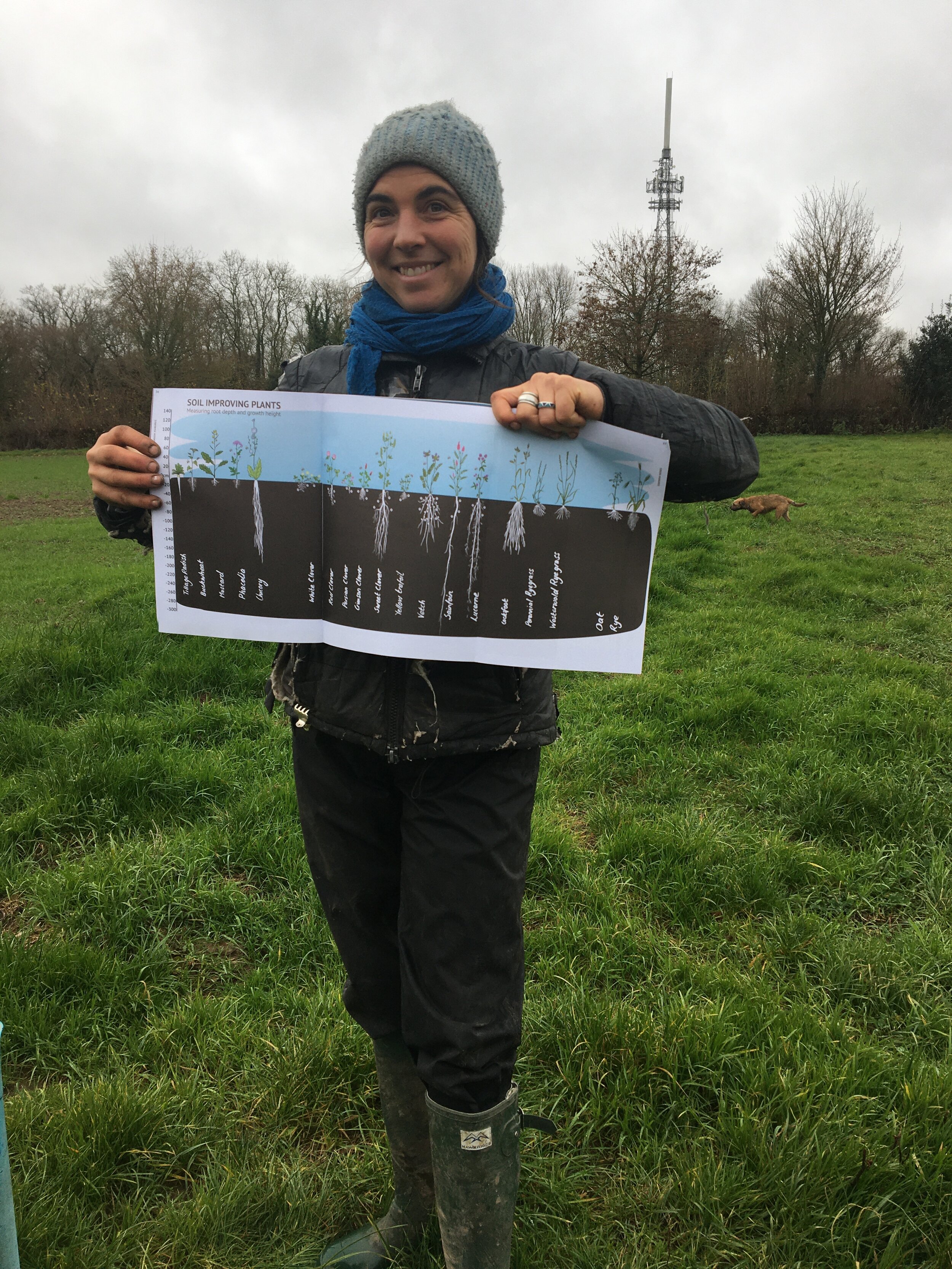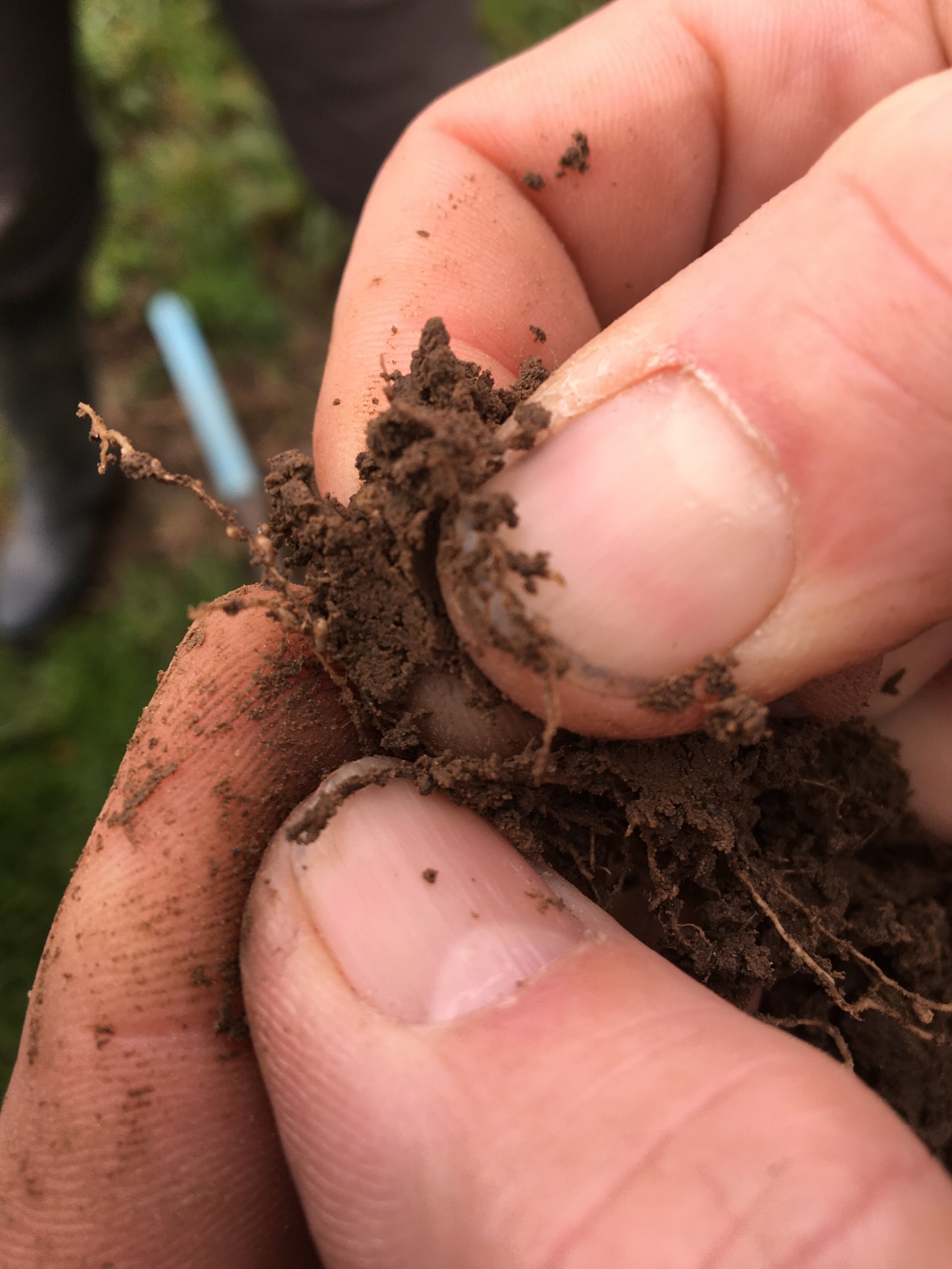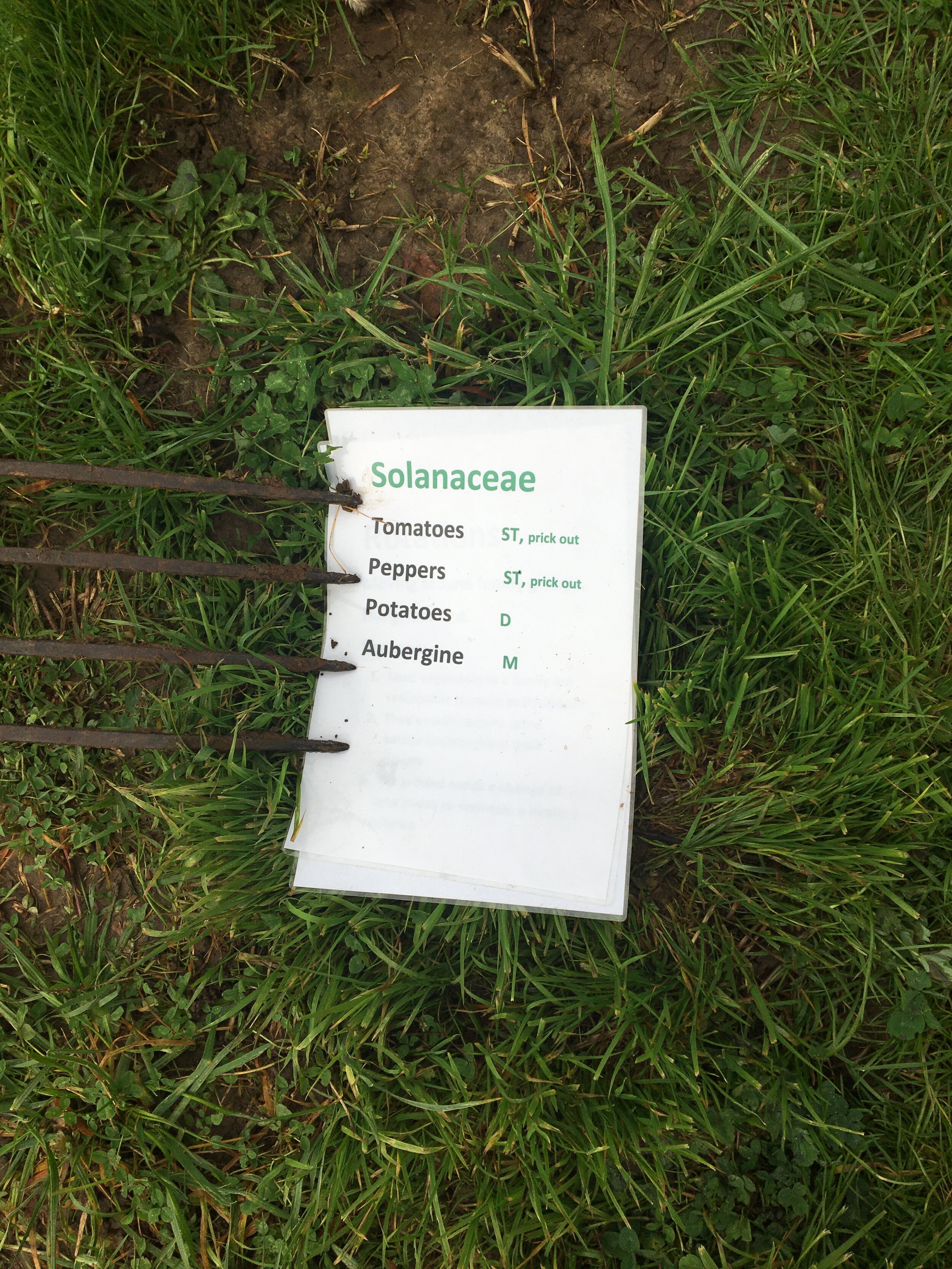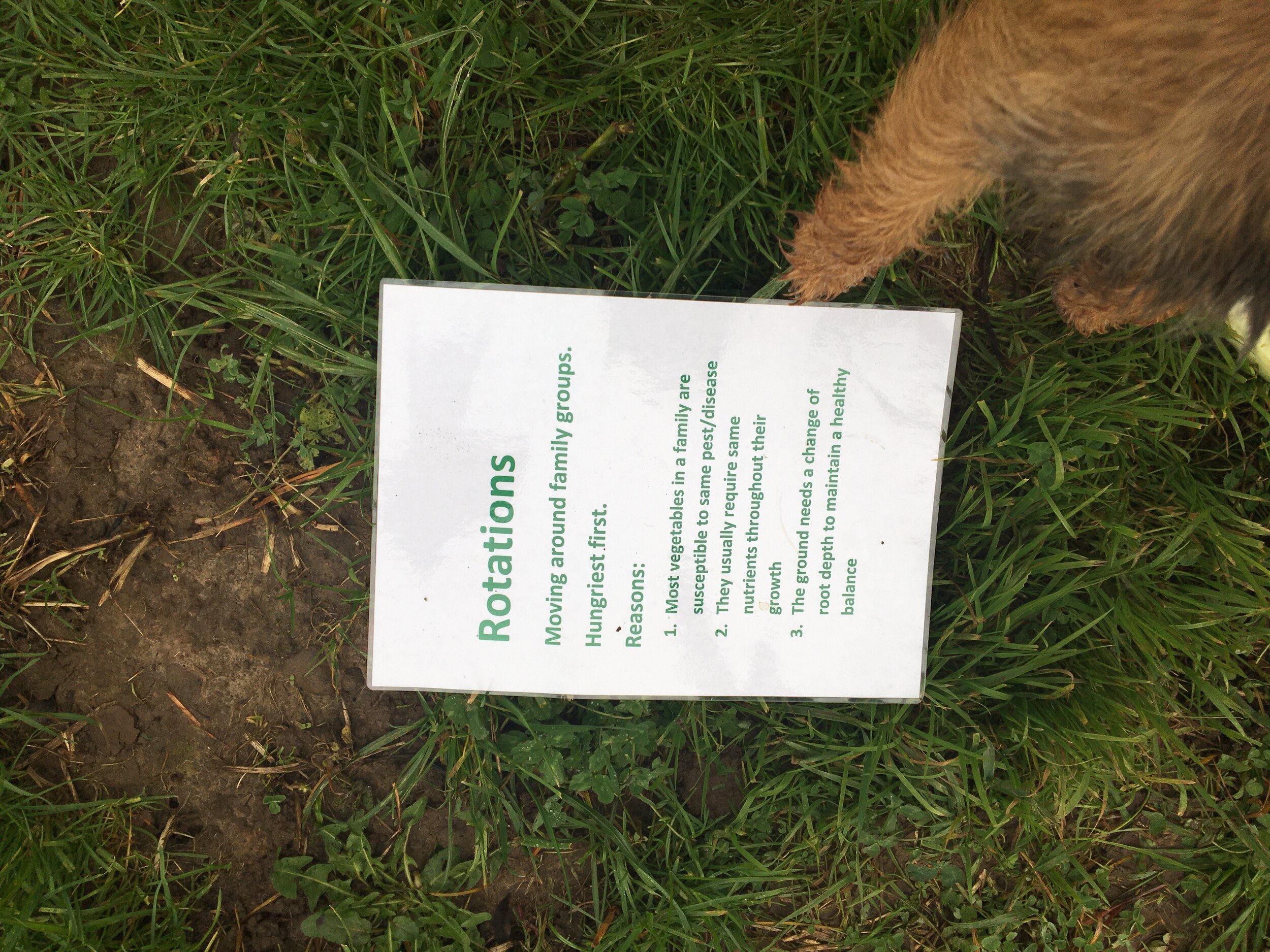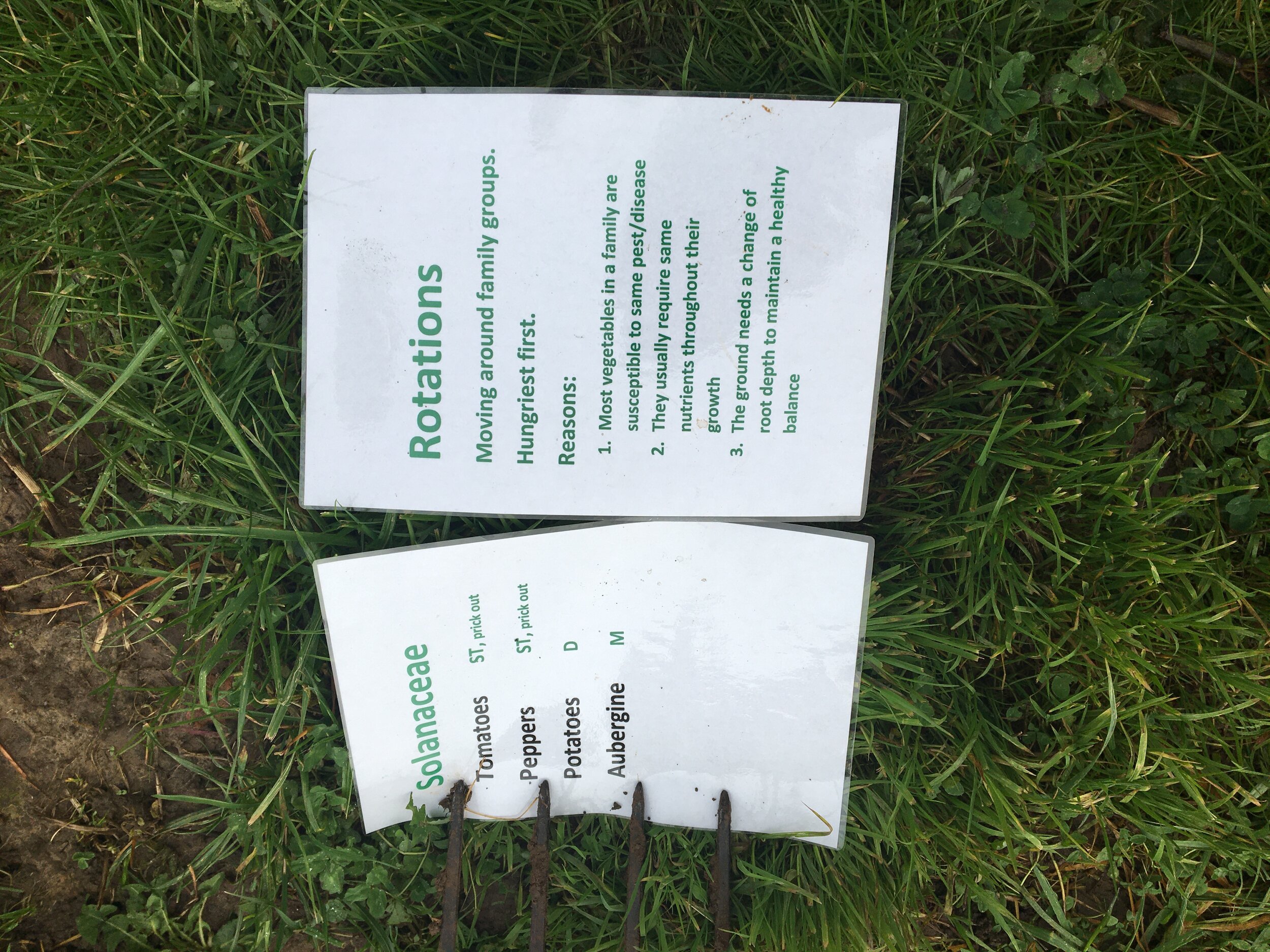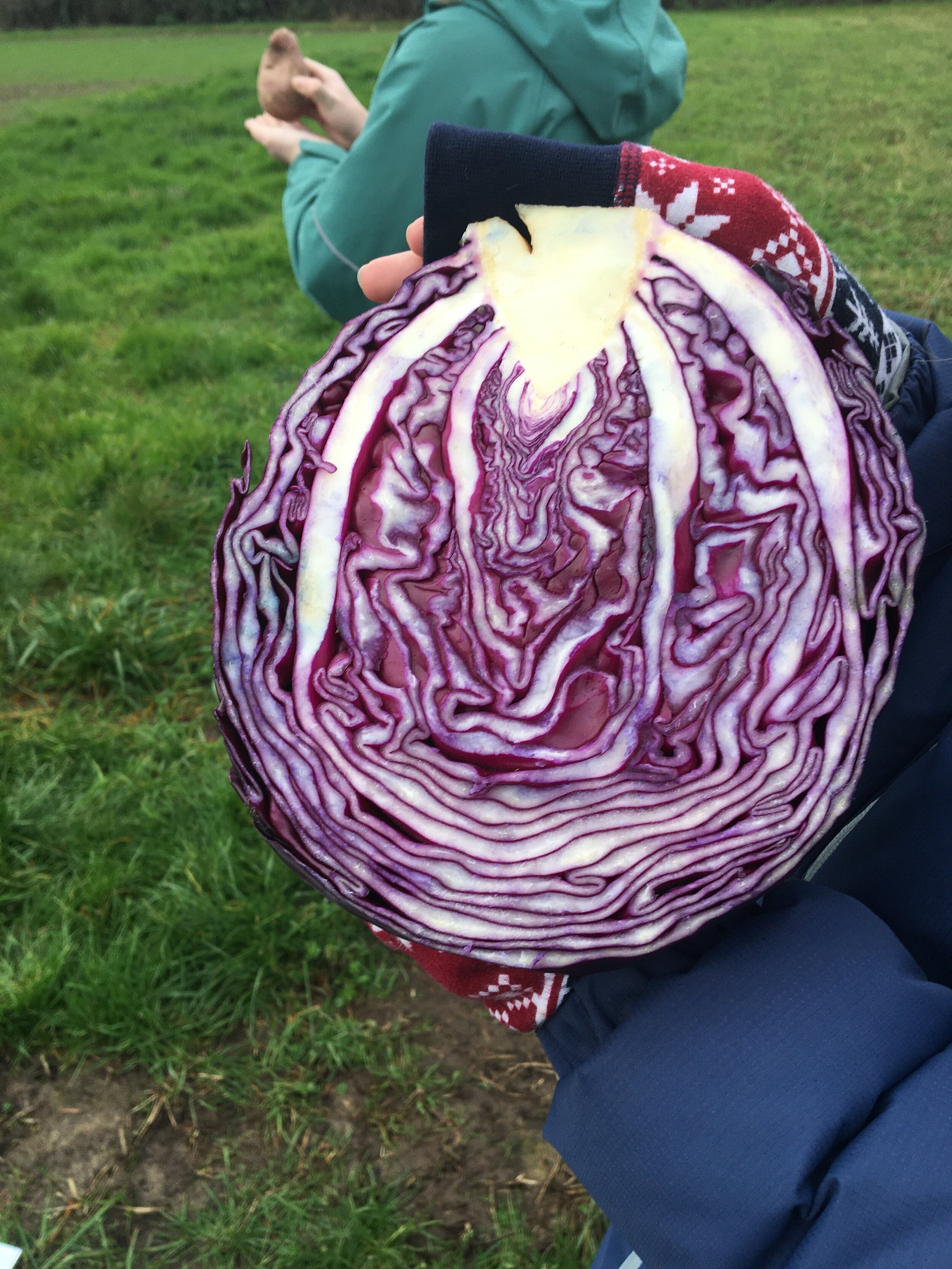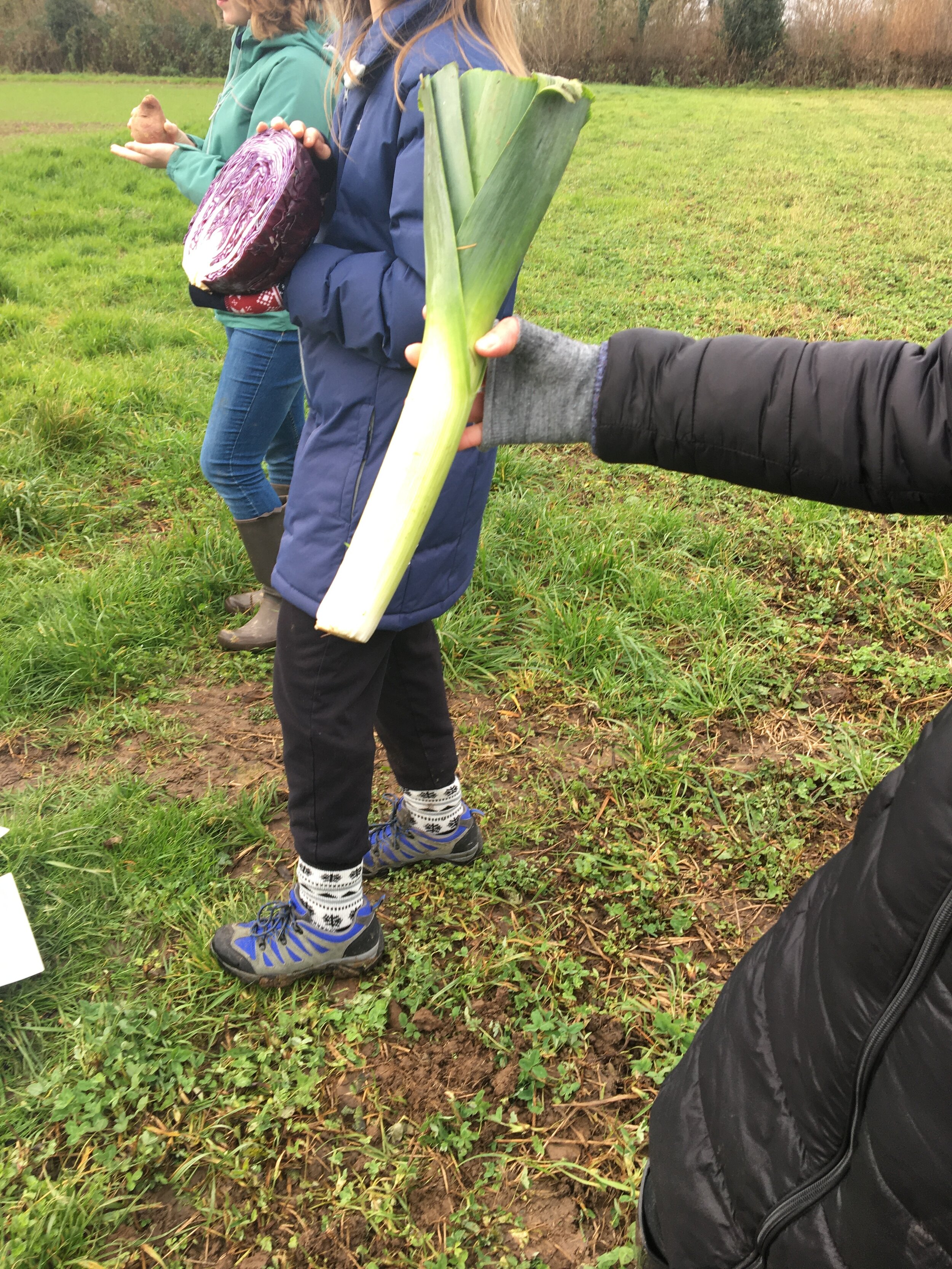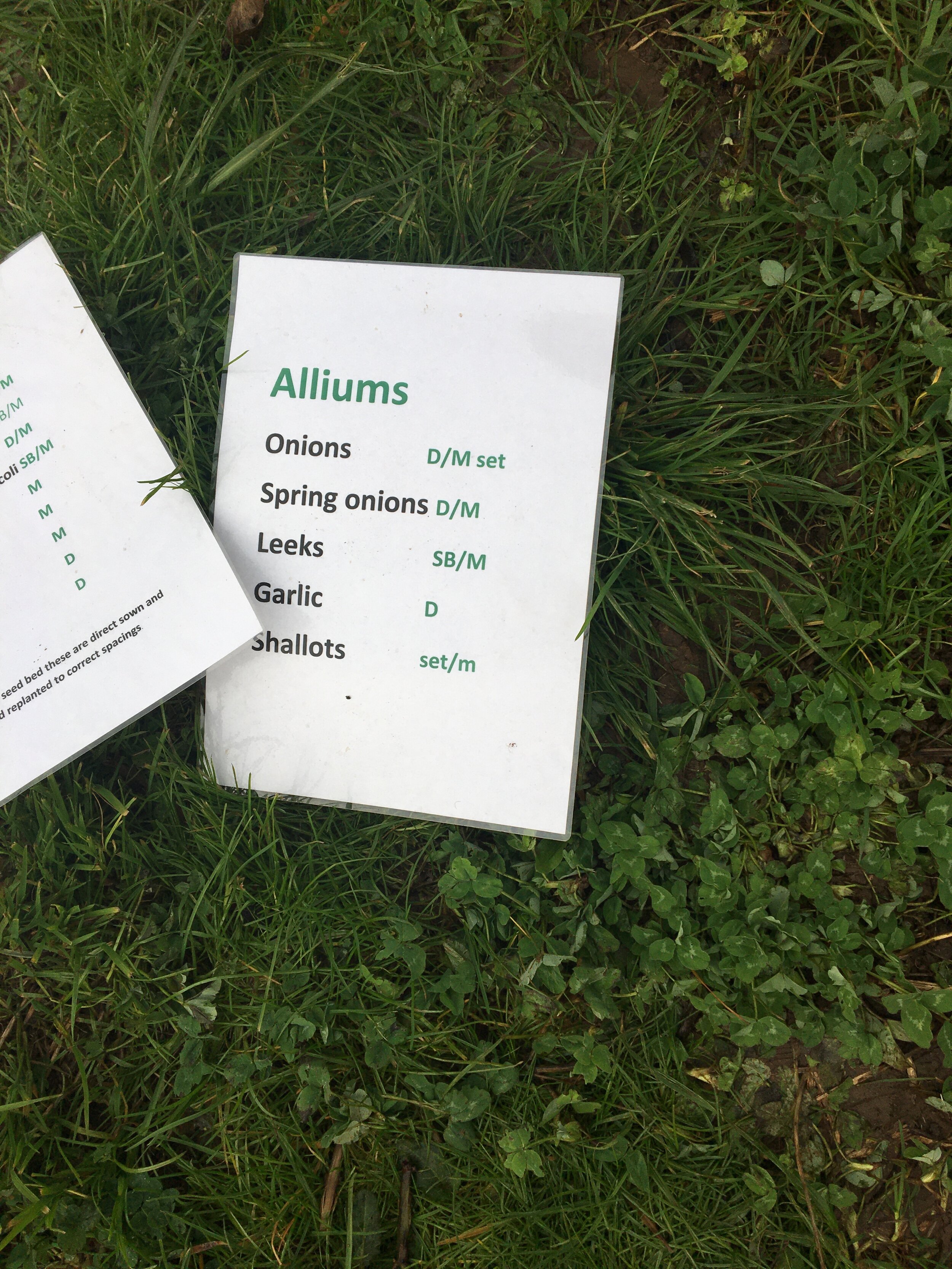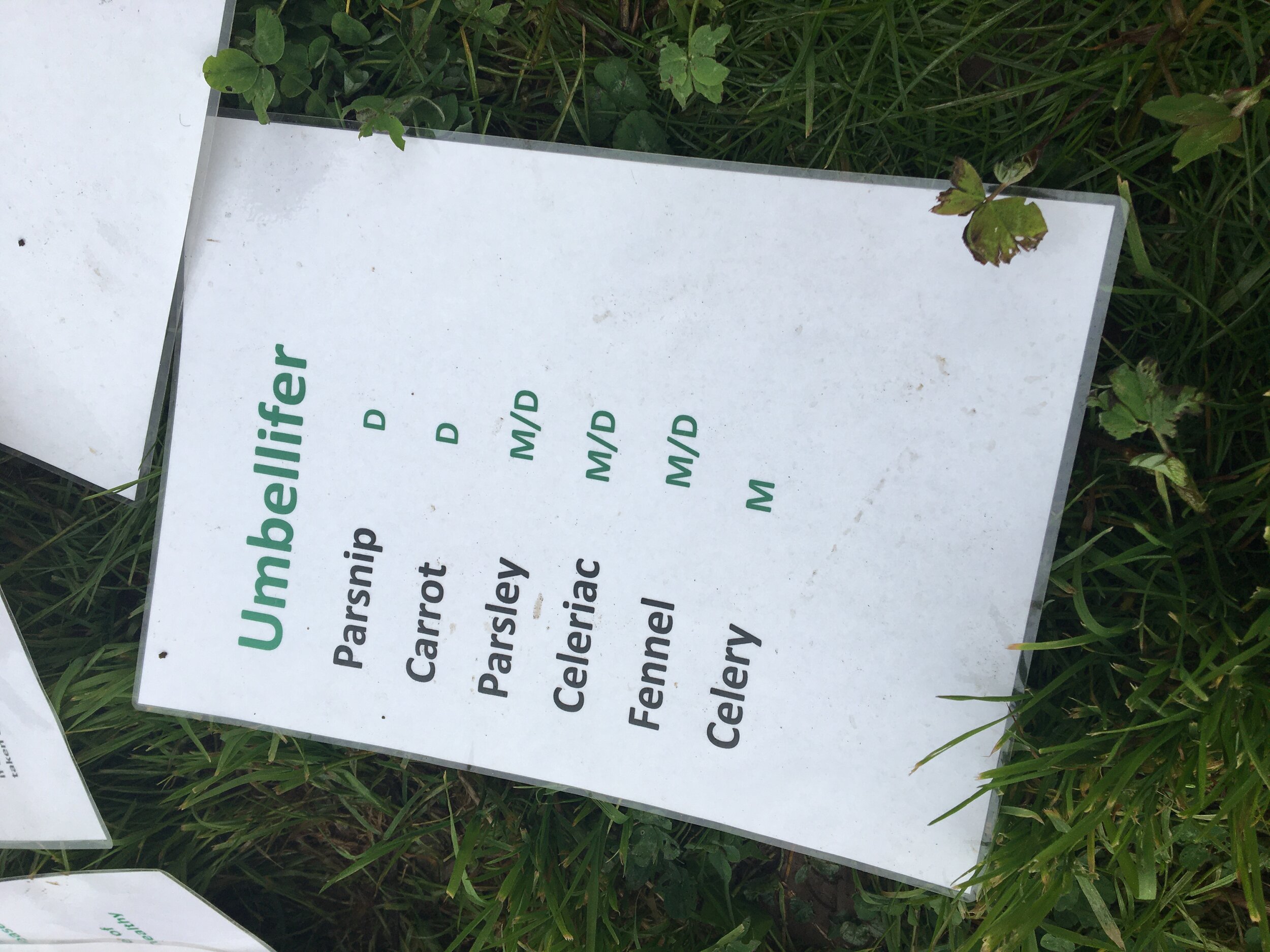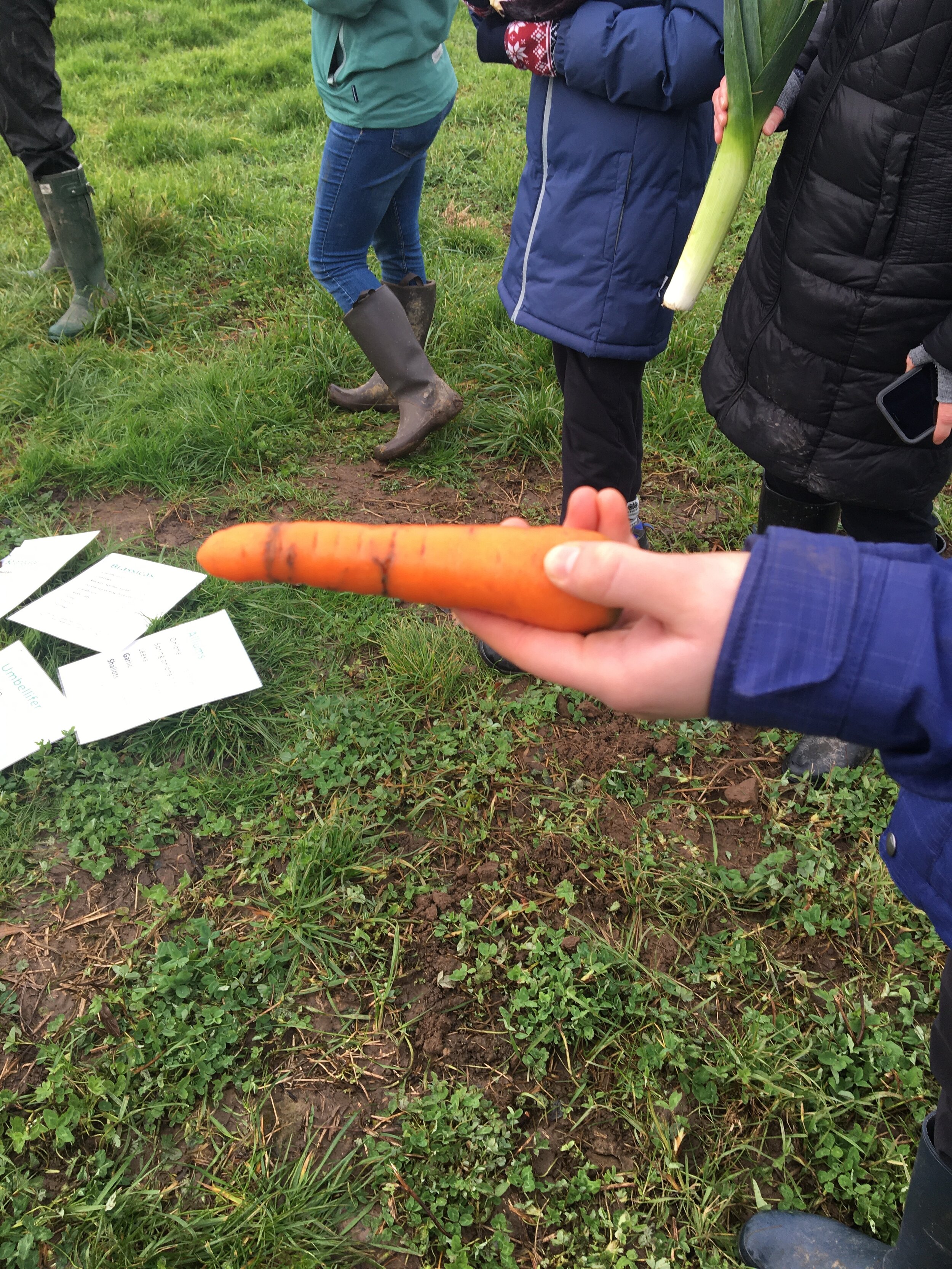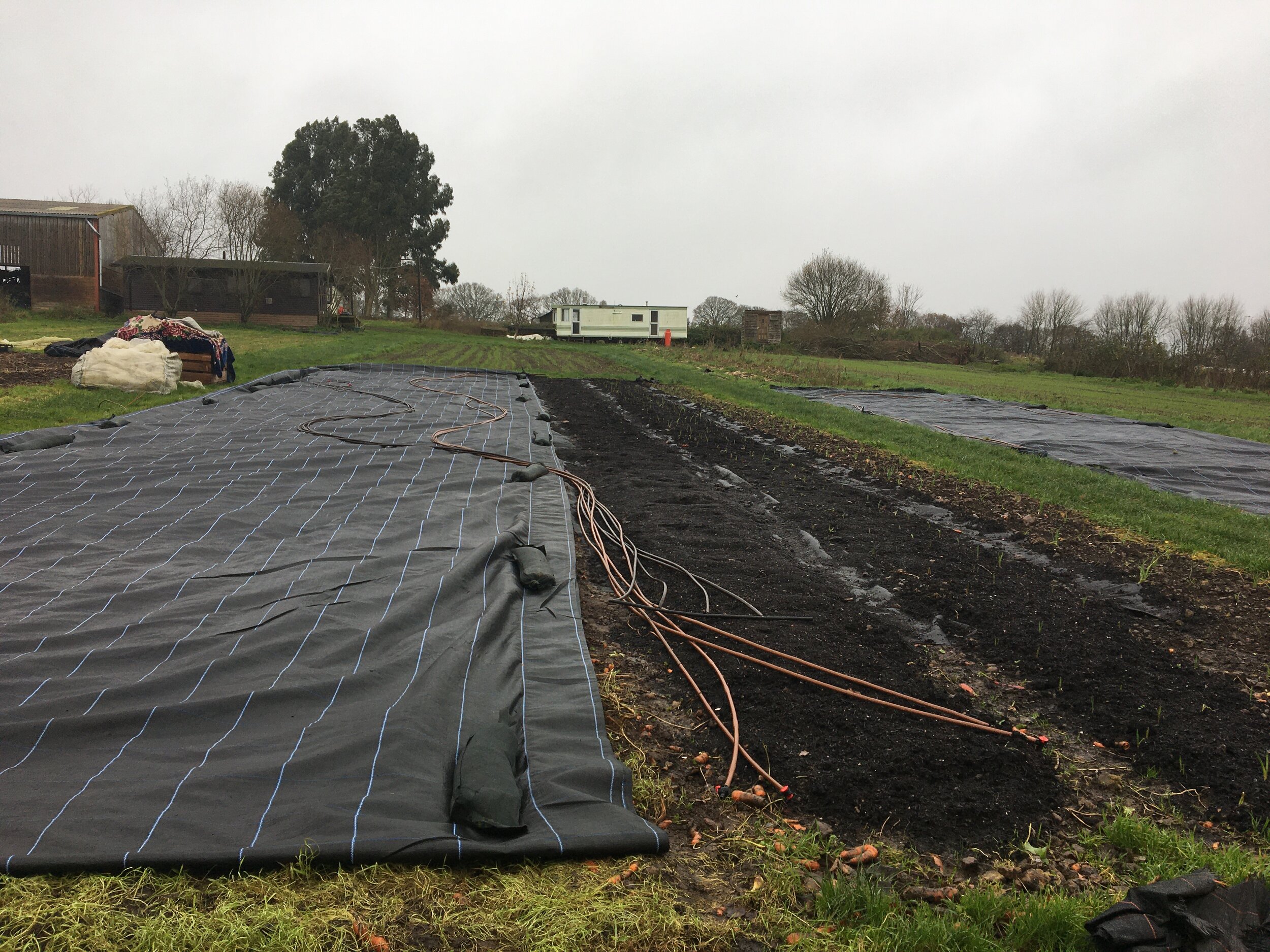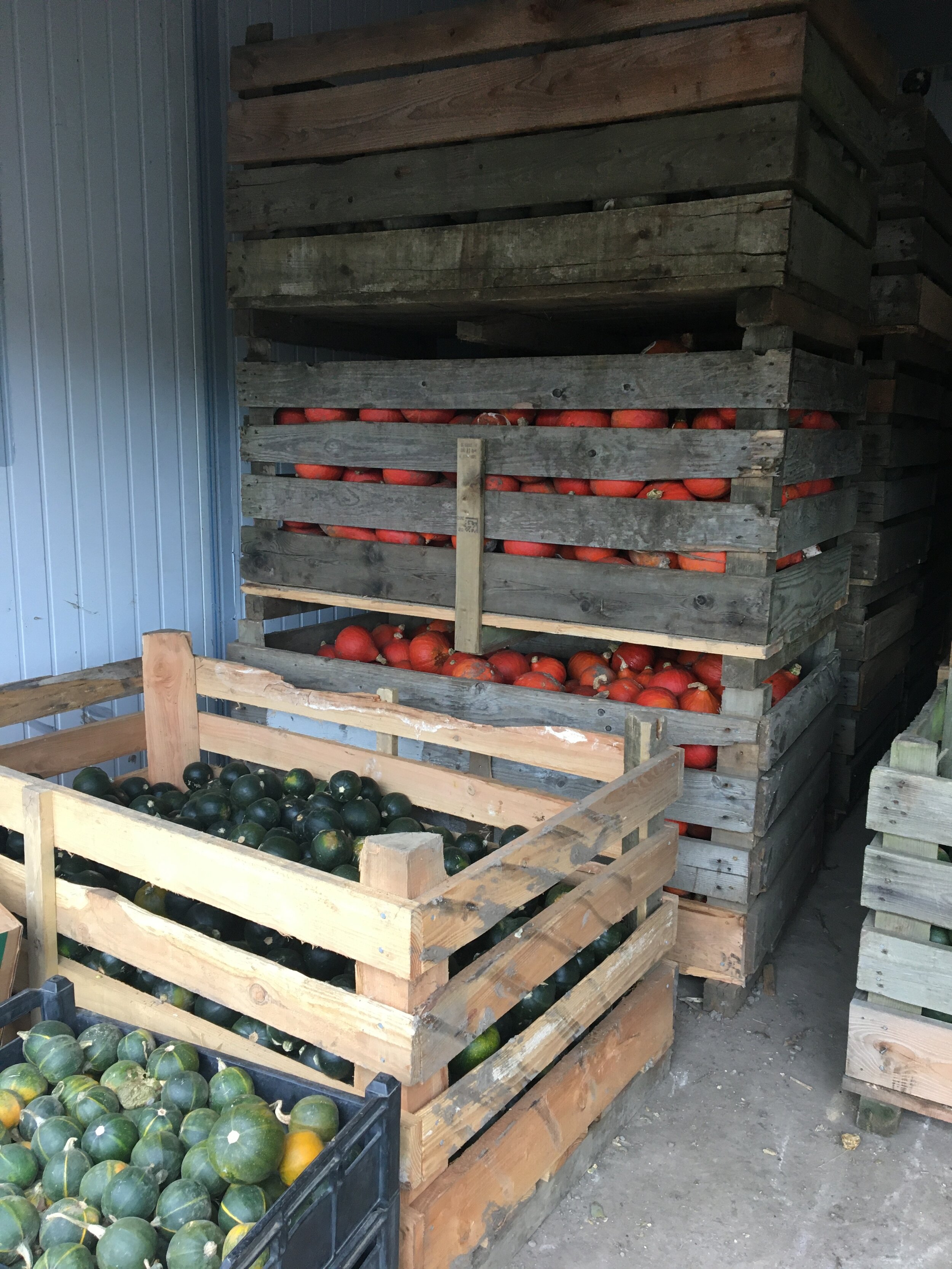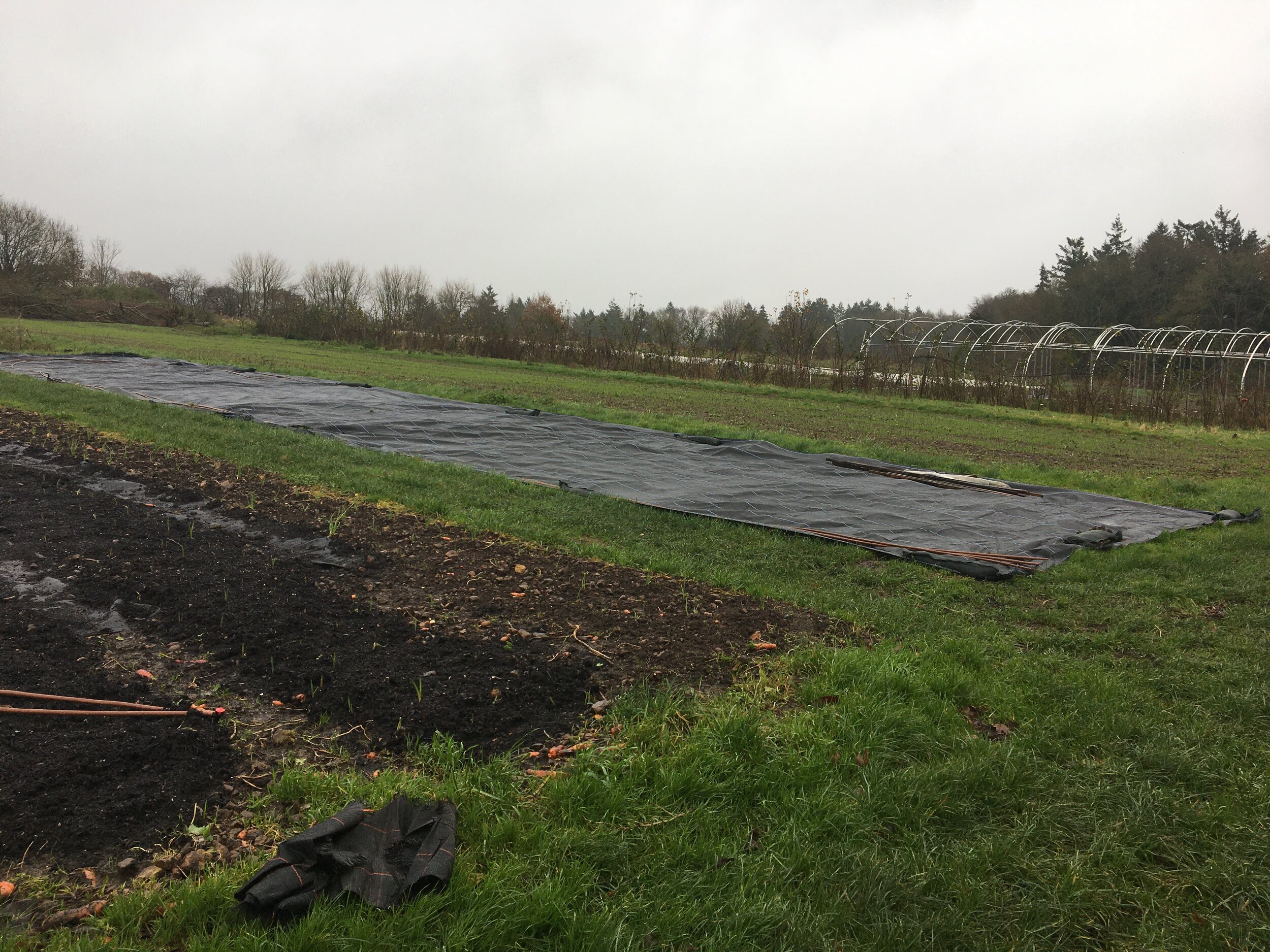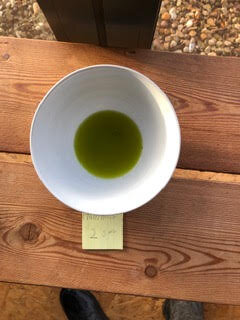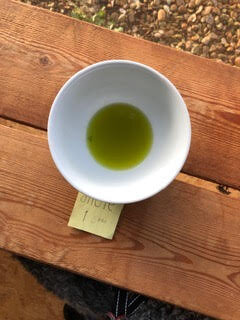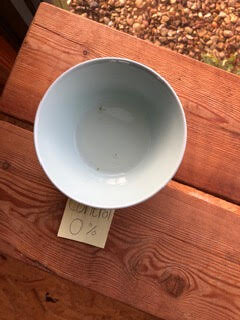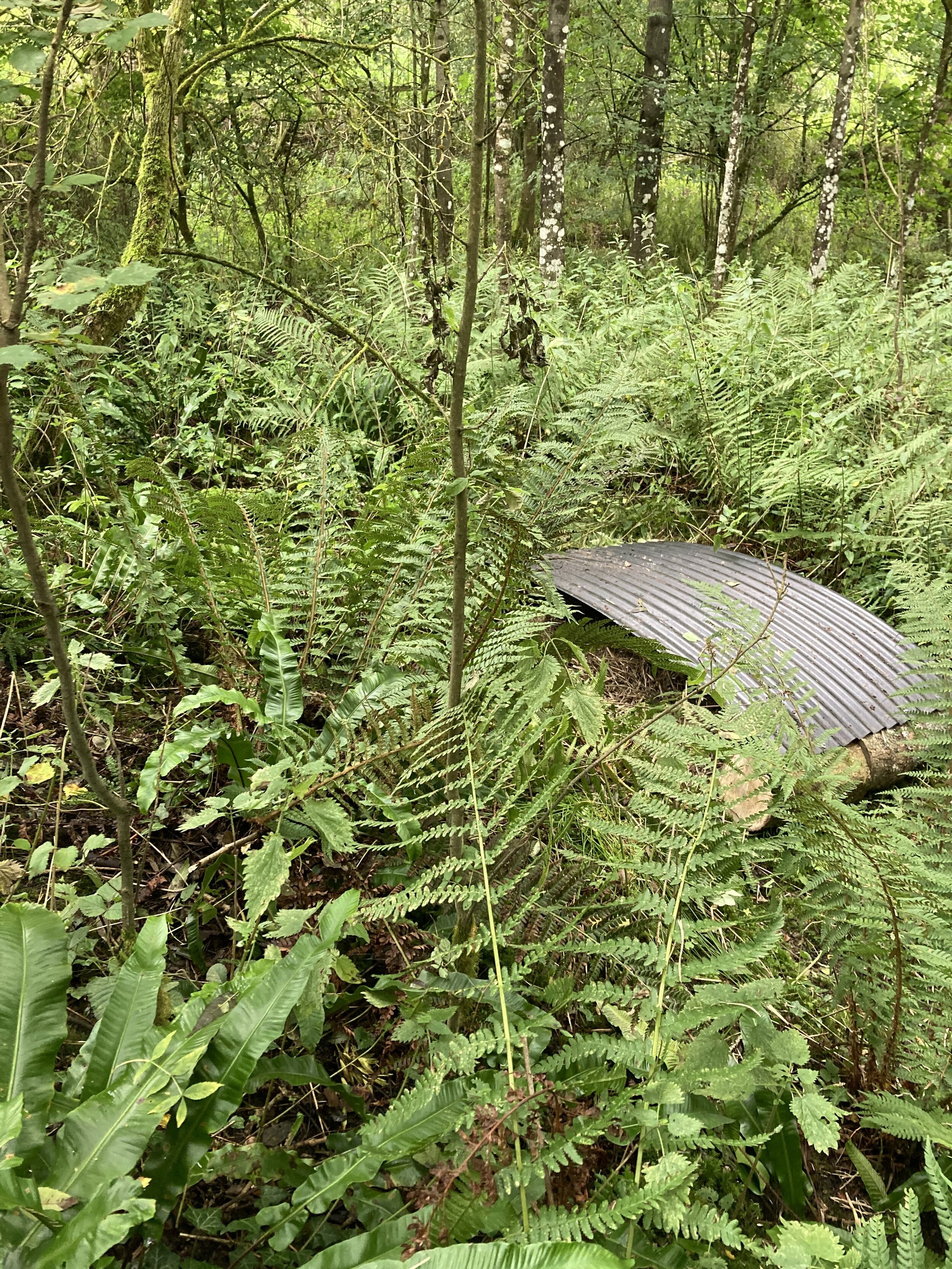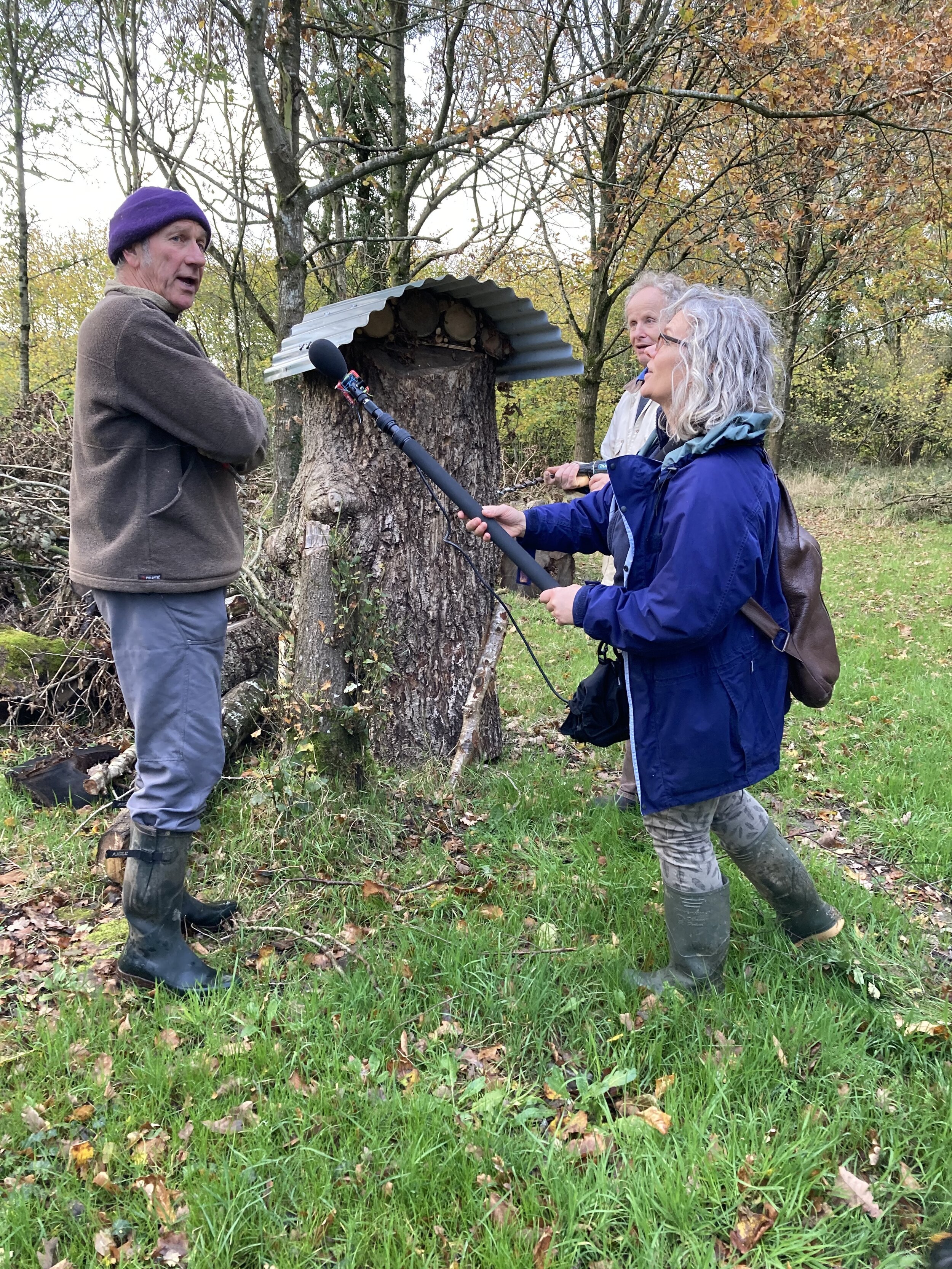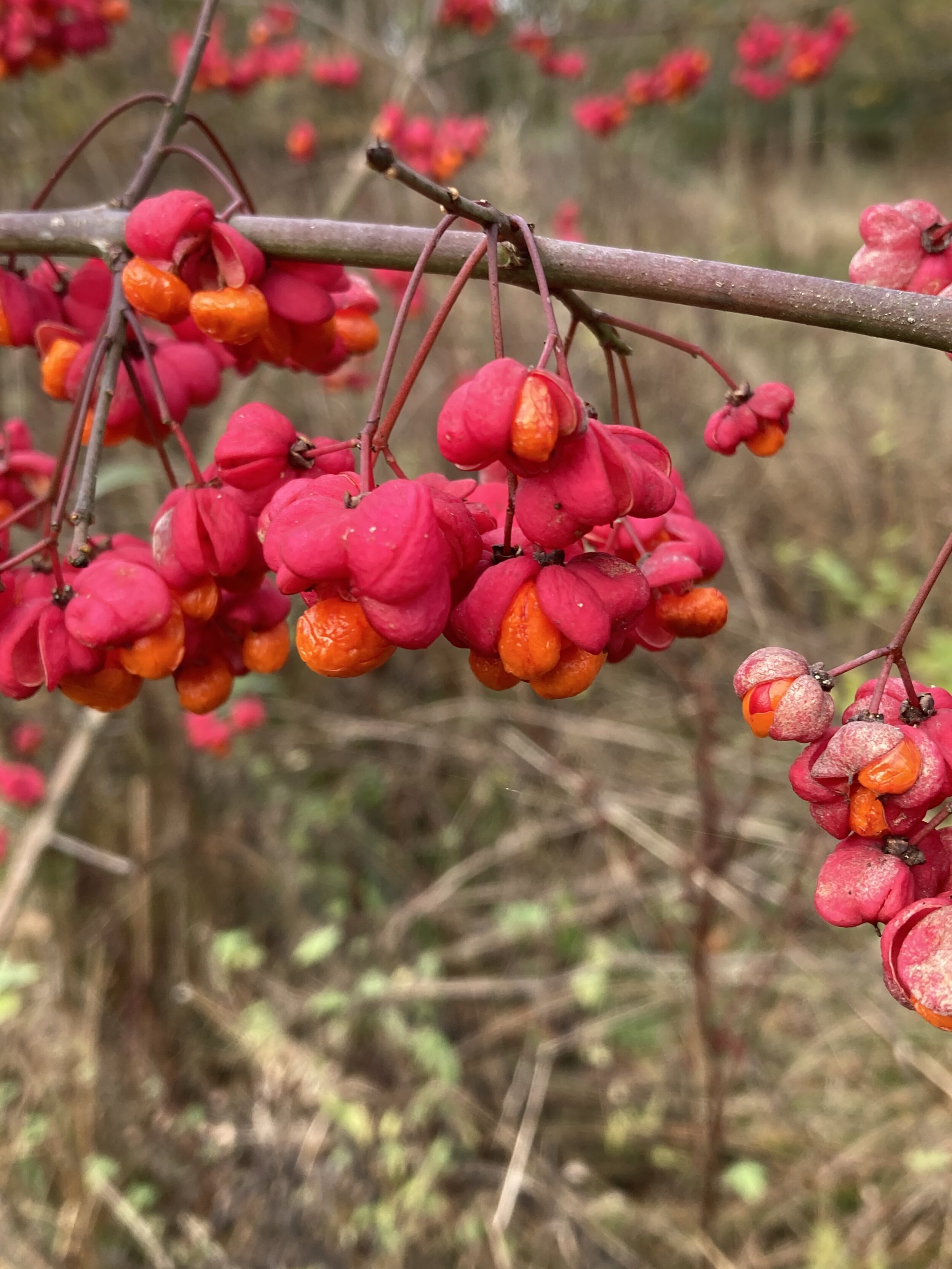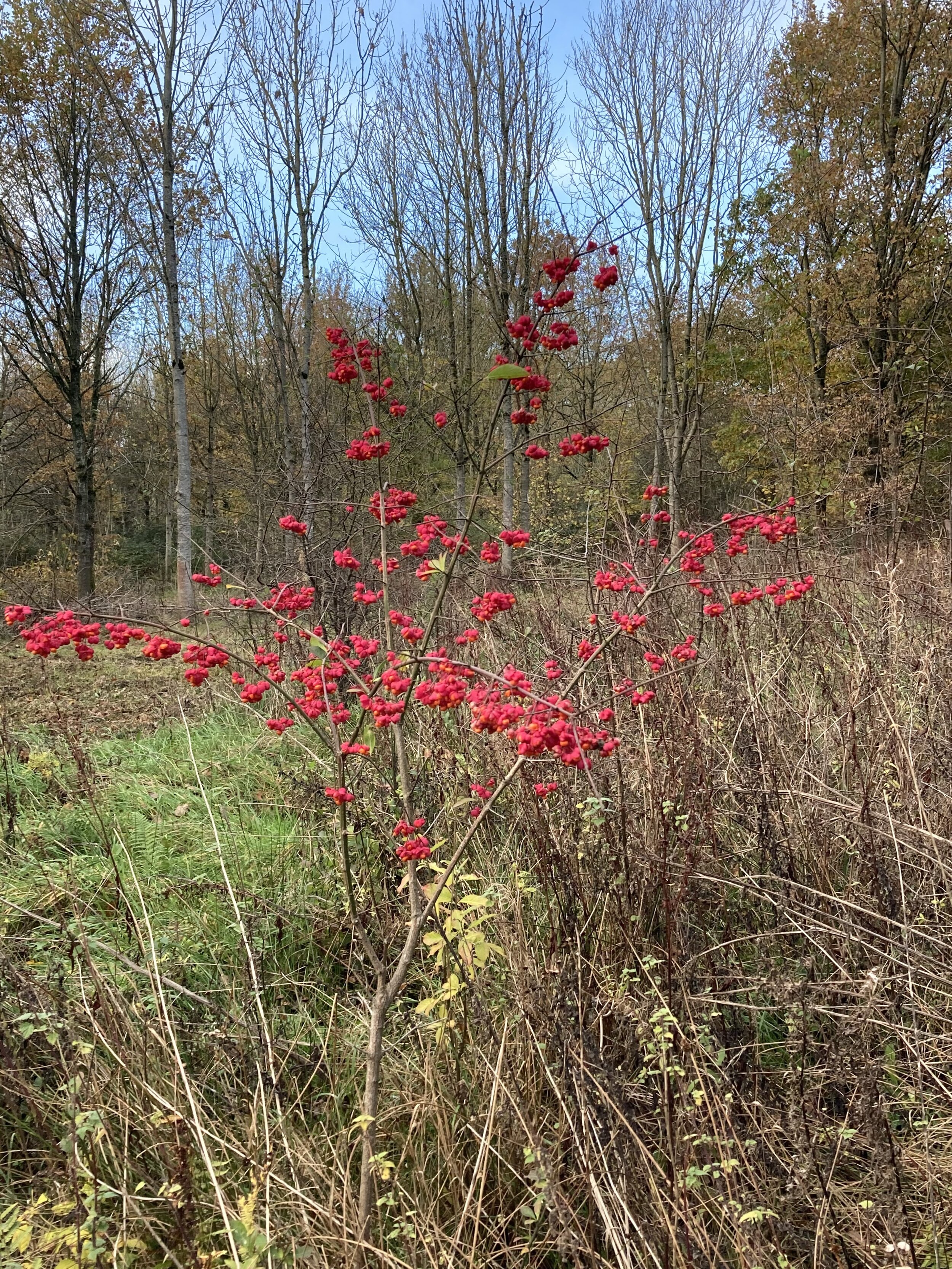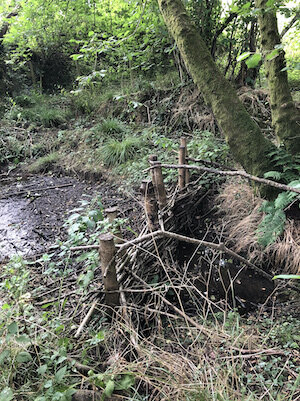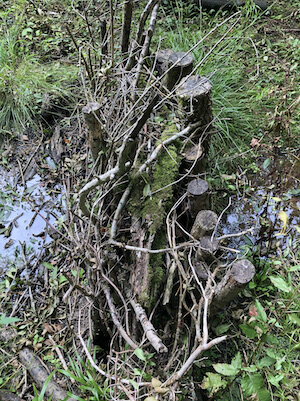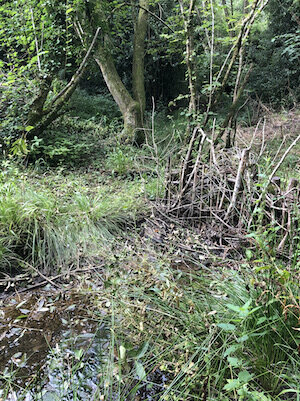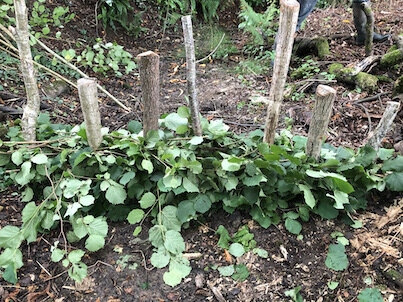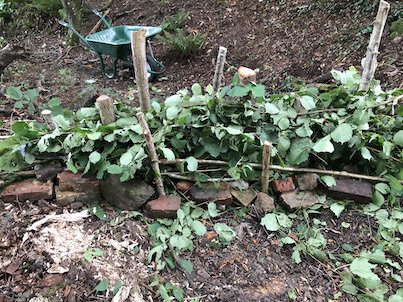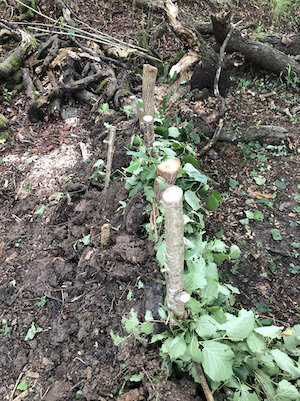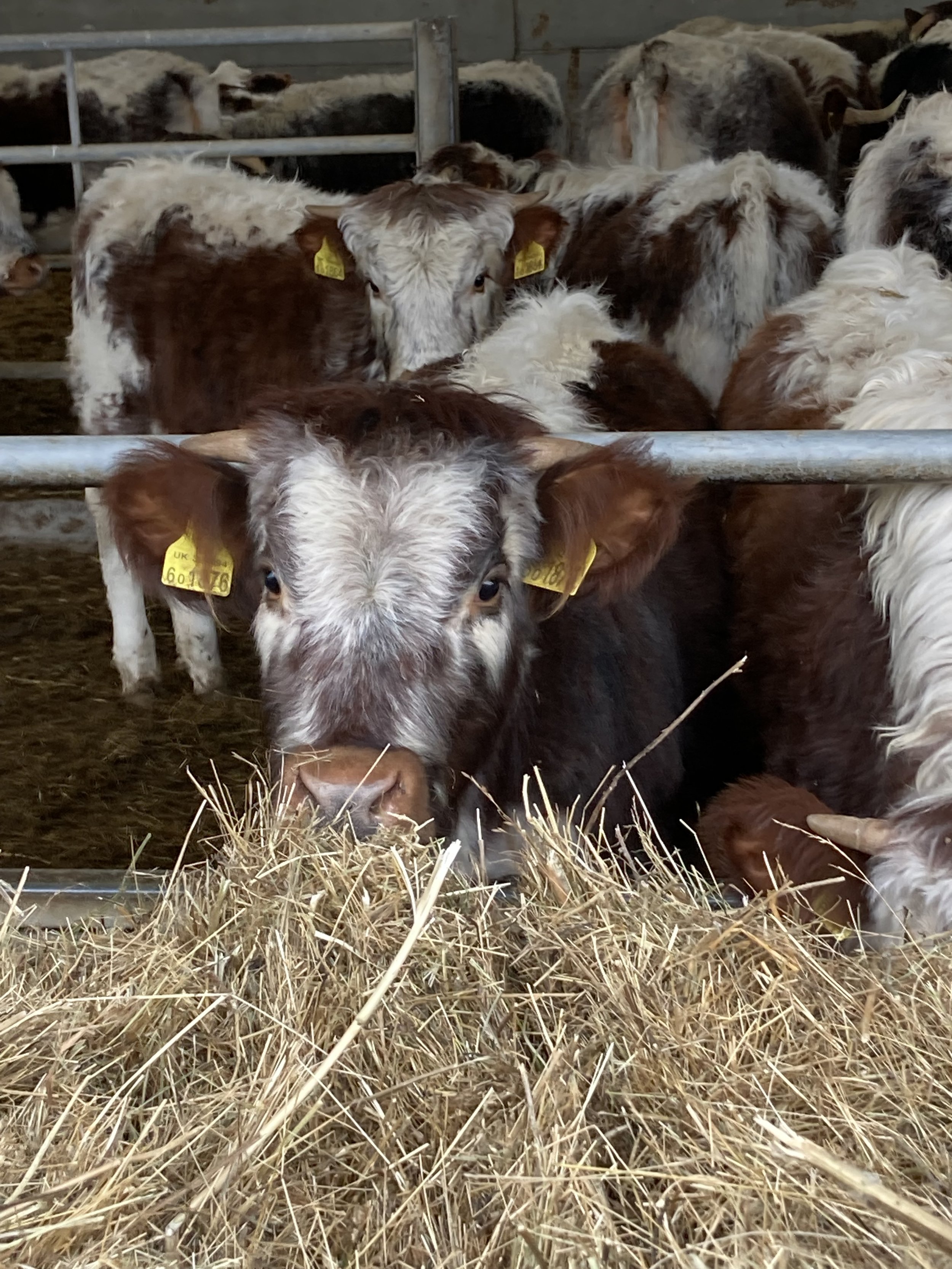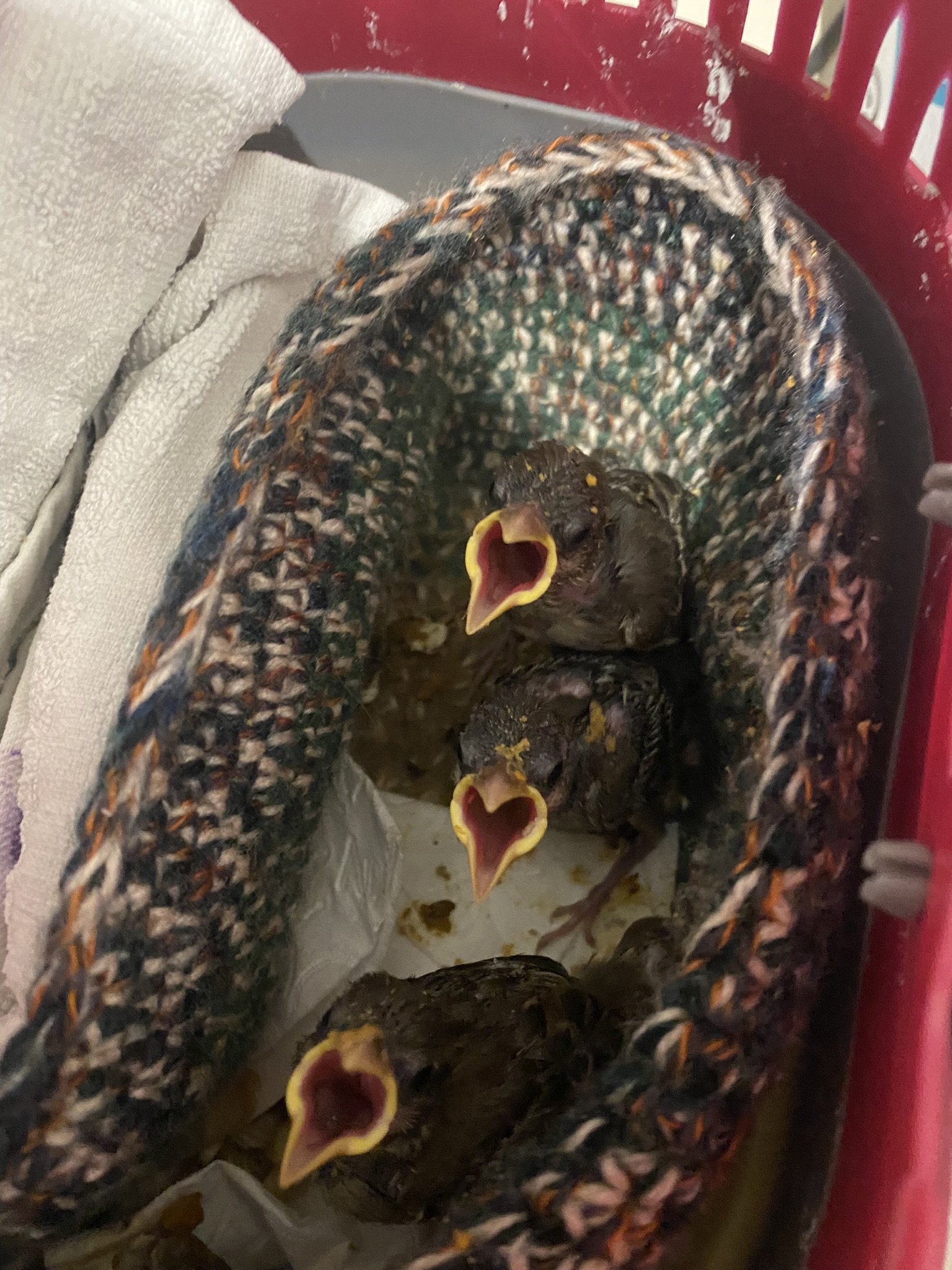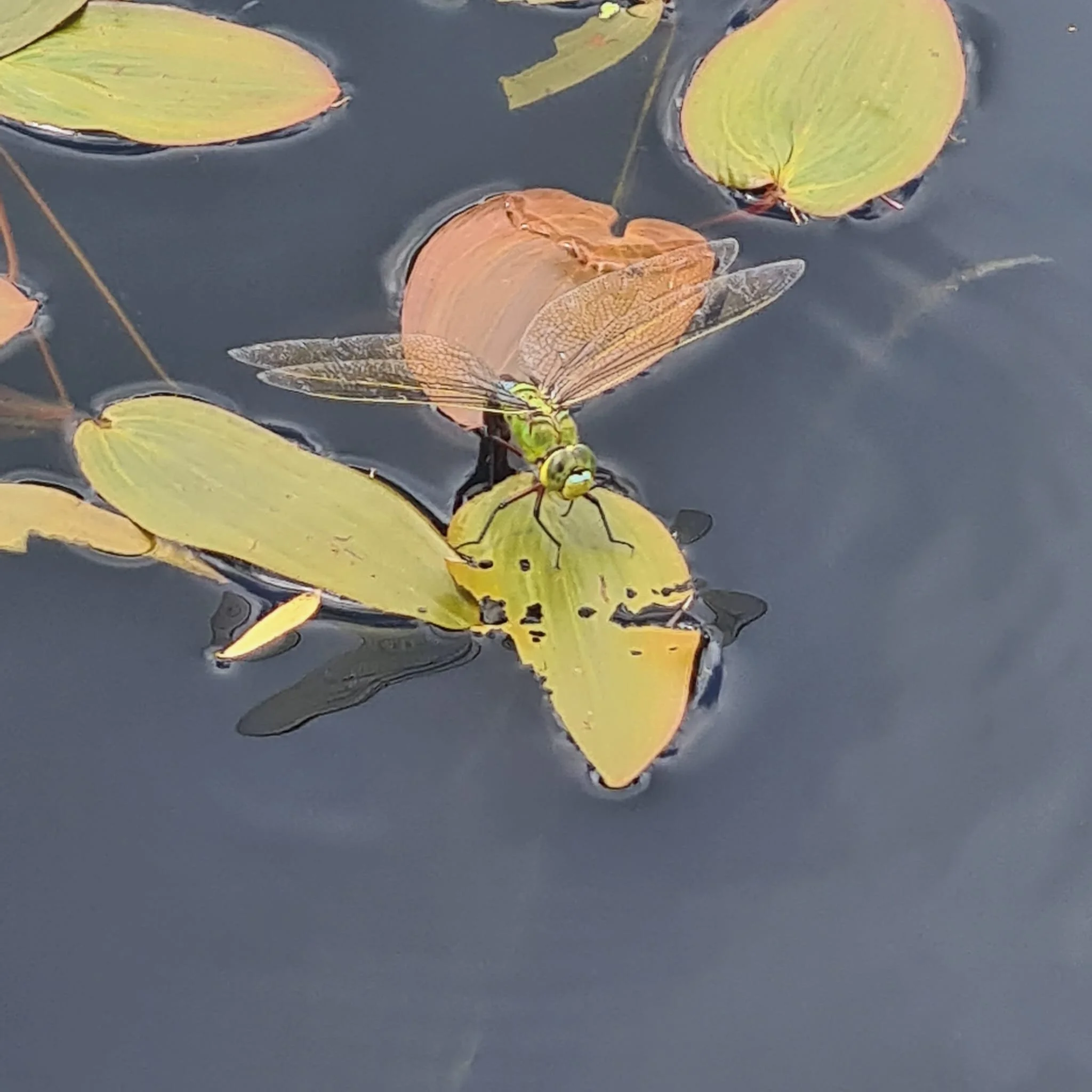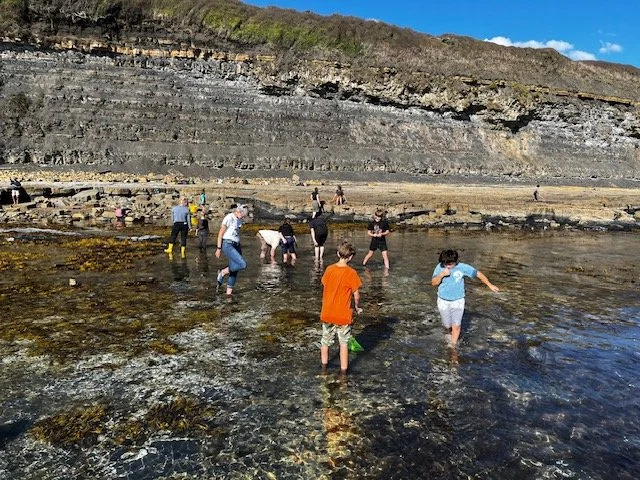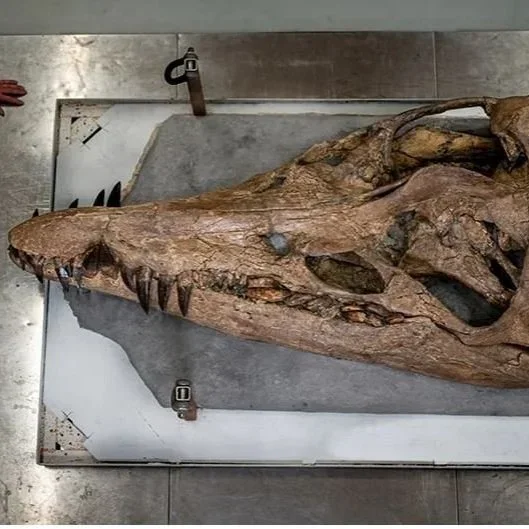At the end of 2017, I was approached by a small group of families who were keen to come to UWNR to learn, engage and be with nature. So, in the winter of 2018 we started this amazing collaboration. This section of the UWNR website is managed by the young people who come to the reserve...
Wessex Home Education Group was formed at the beginning of 2018. It is a group of home educated young people who are working towards a John Muir award at UWNR. During each season the group will enjoy discovering, exploring, conserving and sharing on this page the flora and fauna of UWNR.
John Muir Award: Barn Owls
We watched a short film about who John Muir was and what the John Muir award is about. Then we started our work on barn owls beginning with an amazing story, followed by information on the difference between tawny and barn owls.
Then we dissected owl pellets that were found around the barn this is what we found inside …….
We were looking forward to exploring UWNR but first we investigated some barn owl pellets.
Some amazing bones we found including field vole skulls, ribs and back vertebrae.
As we examined the pellets we were excited to see this lovely barn owl nearby.
After lunch we went to the barn owl field and discovered the rough grassland habitat where the barn owls hunt. Next we learnt that barn owls main diet is field voles and about the owl nest boxes.
Finally a visitor arrived to talk to us about sustainable beekeeping. We are looking forward to creating a pollen bank to attract wild bees.
John Muir Award: pollen bank weeding
On a wet afternoon we met with the aim of clearing the space which is to become the pollen bank.
Chatting as we worked we quickly cleared the weeds despite the rain.
Between us we have decided upon a list of plants to acquire; our intent is to ensure nectar and pollen throughout the year. Too bad we get hay fever!
John Muir Award: pollen bank planting
Several varieties were planted and there are more to follow when available.
Exploring UWNR
Walking around on a lovely sunny day we found tadpoles, lots of insects and wildflowers but our favourite find was this glow worm larvae.
John Muir Award: Dormouse
Our topic for this session was the dormouse, we started by listening to a talk. We learnt about how they are nocturnal, their habitat and what they eat to double their weight before hibernating.
To help understand what it is like to be nocturnal we tried to walk across a field blindfolded. Although it was lots of fun we learnt a great deal about how dormice use their whiskers to feel their way around.
After that we did a fill-in-the-blanks and a crossword about the dormouse.
Then we went on a walk around the land to see the dormice bridges which they can use to cross from tree to tree because they are arboreal. The bridge has been placed next to a bramble patch as dormice like to eat the flowers and fruits of brambles.
After lunch we roped out a section of the the land and started to pick up every hazelnut we could find and put them in a bucket. Then we went back to the barn and tried to identify the animal that had eaten each nut by looking for the gnaw marks and the shape of the hole. We were looking for an almost circular hole but it was very difficult to differentiate the markings on the hazelnuts between a dormouse and other rodents. The hazelnuts will need professional assessment.
John Muir Award: Autumn into Winter
We started our day with a brief talk on moths and then proceeded to open up two moth traps to see what we could identify. We were very fortunate to have some expert help.
We found a number of varieties including:
Hebrew Character
Common Marbled Carpet
Luna Underwing
Centre Barred Swallow
Muirville du Jour
Rosy Rustic
Stripped Rustic
Angle Shades
Six-stripped Rustic
Broad Bordered Underwing
Common Wainscot
Pink Barred Sallow
We did not have time to identify all the micro moths we found, there were lots of those too.
Then we spent some time looking at photos of moths and butterflies before talking about the kinds of changes flora and fauna undergo in the transition from autumn to winter. Next was a picture hunt around the land for animals and insects with a question sheet to complete. When we got back inside we sat and discussed the changes made and survival strategies used by these creatures.
To finish up our busy day we gathered supplies to make a bug hotel. We tried to keep it mainly dry by raising it from the ground using bricks.
As we were building we found many arachnids
Using material from the area and some cardboard egg trays we filled in the gaps between the pallets.
Finally we added some protection to the top layer and then we were done!
John Muir Award: Trees
We began our day by exploring the new barn and talking through the benefits of the spaces provided for barn owls, bats and house martins.
Next we had a discovery walk and talk with worksheets to identify trees on the land.
We then sat with a drink whilst we compared notes and had an in depth session on trees. It helped to have a bare rooted tree on hand to examine. Some of us had read The Hidden Life of Trees by Peter Wohlleben which we had enjoyed and helped us in answering the questions.
This segued nicely into looking at the trees we were about to plant and why they would be a positive addition at Underhill. The Goat Willow providing food and shelter for bees and butterflies and the Gorse which flowers from January to June.
To protect the newly planted trees from deer we added a protective ring of branches.
By the end of the session we had planted a baker’s dozen.
John Muir Award: Construction
Our day started with a discussion on the type of animals to be found at UWNR and the structures we could provide to support them. Walking around the land on a cold and dry winters day we observed bird boxes, dormouse bridges and kingfisher perches.
In order to construct perches we needed to collect some hazel of various sizes.
We returned to the barn to collect tools and split into two groups. One group made bird boxes.
The other group began on construction of the dormouse bridge. Digging holes for the supporting poles and building the basic structure.
Then it was time for a short lunch before we had the UWNR New Year Quiz 2019 Under-21 v Over-21. Luckily we all remembered most of what we have learnt over the past year and there were no fights over the winners.
Back outside the groups switched. More bird boxes were made and the dormouse bridge was completed. In addition we made three kingfisher perches and positioned them around the lake.
Finally we hung the bird boxes near the barn and the bird shed.
We are looking forward to seeing then used.
John Muir Award: Things with wings can migrate
We started the day with a moth session, during the session we opened a moth trap and identified 8 different species of moth: common Quaker, clouded drab, Hebrew character, small Quaker, March moth, early grey, twin-spotted Quaker and a micro moth. After that we went inside and talked about moth and butterfly migration and mapped their route on a wall map.
After that we were presented with our John Muir Discovery Awards and talked about what we would like to cover on the Explorer Award. Over the coming year as part of the award we would like to visit UWNR at different times of the day and compare it to other wildlife areas.
After lunch we went on a walk and tried to identify the bird calls that we heard. We heard: chiffchaff, blackbird, wagtail, blue tit, great tit, buzzard, mallard, nuthatch, wren, crow, jackdaw, jay, robin, chaffinch and a song thrush.
We finished the day by mapping the migration route some birds take . We covered robins, swifts, starlings and Bewick's swans.
JM Award: Stepping up a level
As part of the JM award we are asked to share our knowledge of the area. We started the day by making a list of all the flora and fauna we have leant about ready to share with visitors later in the month. We surprised ourselves with how much we have covered.
For the next level of the John Muir award we have each chosen our place at Underhill we will observe changes in the area over the coming seasons. As part of this we made notes on why we had picked this area and what makes it special to us along with this seasons colours, sounds, creatures and importance. Lastly we tried to predict the changes that will happen over the coming weeks.
Our last task for the day was to start on the third bug hotel. This is a large hotel attached to the barn and will be completed over a few sessions. We drilled holes into logs, cut hazel and added air bricks to the structure.
JM Award: Dawn chorus
An early start! No photographs from this session due to low light levels but we do have some sound recordings. We tried very hard to identify as many birds as possible from their calls. These are the ones we were able to identify:
wren
blackbird
pheasant
duck
blue tit
coal tit
wood pigeon
woodpecker (by it’s pecking)
great tit
crow
goose
We are certain there were more that we could not identify but thought we had made a good start and hope to do better next time.
JM Award: Frogs, Toads and Open Day
Our day started with a learning session on the differences and similarities between frogs and toads. Having discussed skin, walking, hopping and jumping we then covered what they eat (insects, snails, worms) and where they live, breed and hibernate.
In order to provide habitat for froglets and toadlets we cut down some hazel to make small wood piles around the lake.
After lunch some of us rehearsed our talks whilst others continued with the wood piles.
At 2pm we began our guided talks around the land. Each of us took about six visitors on a tour sharing what we have learnt. Everyone was lovely and we finished the afternoon with tea and cake. Another great day!
John Muir Award: Bug Hotel Update
Taking advantage of the recent sunny weather we spent some time completing the large bug hotel.
We are happy to report that it already has a few residents!
John Muir Award: Bats
Late afternoon on a Monday in August the Wessex Home Education Group met together with Jenny from the Wiltshire Bat Group at Underhill. To begin the session we listened to a talk from Jenny. This was fascinating and included information about which bats are normally found in this area, their migration routes and echolocation. Whilst learning about bats from around the world we were particularly interested to learn that some of the larger bats can use their eyes to hunt for food.
After the talk we had a delicious dinner cooked on the BBQ and started to prepare for the walk. To be able to hear the bats we had bat detectors that would bring the calls down to a lower frequency which is audible to human ears. This also meant that the bats were not disturbed by us listening to their sounds.
The bats we heard while walking around the land were:
Common Pipistrelle
Soprano Pipistrelle
Brown Long Eared
Serotine
Noctule
Myotis
Thank you very much to Jenny for a fabulous evening and to Jonathan for hosting us.
Before we left for the night we set up a Robinson moth trap ready for our next session the following day.
John Muir Award: Moths
In the morning we opened the moth traps together with Hugo from Butterfly Conservation.
We found a variety of macro and micro moths.
The macro moths we found were
July Highflier
Lesser Broad-Bordered Yellow Underwing
Brussels Lace
Straw Dot
Six-Striped Rustic
Dingy Footman
Lesser Common Rustic
Blood Vein
Pale Prominent
Maidens Blush
Once we had made our recordings and released the moths to a safe place we went on a walk to look for butterflies. We found a number of stunning examples.
Thank you very much to Hugo for such a lovely morning, we always learn something new!
John Muir Award: Barn Owls and Beaver Dams
The focus of the morning was learning about barn owls and looking at what we do here at UWNR .
To start with we watched a basic introduction to Barn Owls and learned all about just how amazing they are !
After that we had a look round at the barn that has been built specially for barn owls at the nature reserve .
The barn has special perches for barn owls and has chicken feed scatted around to attract rats for the barn owls to hunt when they cannot go outside .
Then we dissected owl pellets that we found in the barn , this is what we found inside …
We spent the afternoon doing something completely different , we have been working on the reserves second artificial beaver dam .
We made a barrier in the stream out or solid logs stuck into the ground and then built around it with smaller sticks , twigs and brush , this will clean the water as the stream flows through and encourage small aquatic life in the pool that we have dug on one side .
First day of IGCSE !
On Friday the 19th of October Wessex Home Education Group Gathered inside at UWNR warmed by the wood-burner to start our work on an Environmental Management IGCSE.
We had all purchased a coursebook and had briefed ourselves on chapter one : Rocks and Minerals And Their Exploitation .
Johnathan had prepared a power point and fond some news articles for us to look at .
We learned about :
The characteristics of different rocks , the rock cycle, and how rocks are formed.
Surface and subsurface mining .
The reasons for extracting rocks and minerals.
The impacts of mining .
Methods of landscape restoration.
How rocks and minerals can be used sustainably.
We then went out around the reserve and collected rock samples and discovered that the reserve is mainly made of metamorphic rocks
We will be continuing these sessions every few weeks over the winter until we have finished all Nine sections.
This will help towards completing our John Muir Award.
IGCSE chapter two …
We returned to the reserve last Friday to continue with our environmental management IGCSE.
The chapter that we looked at this week was all about Energy and the environment. We had all read through the chapter beforehand and, similar to last month, Jonathan took us through what we needed to know .
We learned about :
the names of fossil fuels and how they are formed
renewable and non-renewable energy sources
about how different energy sources are use to make electricity
the environmental , economic and social consequences of different energy sources
different demands for energy
how energy sources can be managed efficiently
current research into possible new energy sources
the impact of oil pollution
how the impacts of oil spills can be minimised
But this week we also did two experiments to go with the topic .
the first experiment was all about seeing the benefits of insulation , we had three jars , the first was just a normal glass , the second had a piece of paper wrapped around it and the third was wrapped in a sock .
The second experiment was all about cleaning up an oil spillage , we poured a couple of table spoons of vegetable oil in a tub of water and tried many different methods used to clean up a real spillage, all in all , none of them were successful.
We are all very much enjoying working on this gcse and are now working on the next section : Agriculture and the environment .
IGCSE : Agriculture and The Environment
On Friday the sixth of December ,Wessex home education group and a few others visited Kensons Farm in Sutton Mandaville for an incredible talk about organic vegetable farming .
Our lovely guide Liz had prepared a talk which linked in perfectly with our gcse chapter and it was really great to see the words put into action .
First we went through the different types of soil and compost used for organic farming
Then we talked about different plants , crop rotation and green manures !
And then lastly we looked at how they grow and store their crops .
Everybody thoroughly enjoyed the talk and felt they had extended what they learned from the text book!
https://kensonsfarm.wordpress.com/ https://www.instagram.com/kensonsfarmflowers/
A Busy Day !! 10th of Jan 2020
We had a very busy time on this stunning day , first of all we had Hugo join us to look at our winter moth trap, after the cold night and full moon we had only one moth ! : THE ‘winter moth’ !
After that we covered our next igcse section : Water and Its Management We learned about :
The water cycle
Water sources
The availability of safe drinking water
Multi-purpose dams
Water related diseases
Water pollution
Next we prepared an experiment in which we had 5 bowls which we filled with different concentrations of plant food . These ranged from all water to 100% plant food, then we placed four pieces of duck weed in each bowl and left them in the sun for a week .
Our predictions were:
the plants in the most concentrated one would die
the plants in the second most concentrated one might die , will certainly not thrive
the next one would do well
the bowl with only a small about in , we thought would do the best
the plants in water would do ok
To our great surprise after a week they were completely unchanged !!!!
Small Mammal Shelters 4th September 2020
First John Muir day back! 4th September 2020 Sitting outside amongst the beautiful autumn leaves, we learnt about foxes in the UK. Jonathan had given a range of questions to research and share. Then it time to stretch our legs and build small mammal shelters around the reserve and check out the new land! To do this we selected and cleared a small and sheltered site, and created a simple shelter out of two logs and some corrugated tin, making sure they were faced away the prevailing wind and tucked into the landscape. These will provide shelter for a variety of creatures on the reserve for the coming winter months. It was nice to be back at UWNR.
BBC Interviews! November 2020
Today was a very exciting day at the reserve as Rebecca Rooney, a freelance journalist for the BBC came to interview a variety of people regarding UWNR for the Radio 4 programme Farming Today. I was interviewed by her about what we do as young people at the reserve and the John Muir award. We discussed dormice and I showed her some habitats and recorded sounds of brambles scrunching under foot! Hoping that the programme will air in early January. It was also lovely to see these beautiful Spindleberries on the reserve.
The Kingfisher (Mid November 2020)
It was lovely learning about kingfishers on a mild November morning. We started with doing the practical work of building new kingfisher perches. We split into two groups, one group went and cut a small amount of oak and the other went and got hazel. The oak was for the supports and it will last a long time and the hazel was for the kingfisher perch itself.
We made the perches about 2m long because kingfishers prefer to hunt away from vegetation at the edge of the lake. We made five in total.
This is a kingfisher using one of the old perches.
Kingfishers in the World:
Covering topics like:
How many species worldwide?
What size is their range....where do they exist / don’t exist?
What different habitats are they found in?
What different prey do they hunt?
What size differences are there?
Kingfishers in the UK – their overall ecology....
Covering topics like:
What is their range in UK?
How many species?
Seasonal changes and adjustments?
Numbers of breeding pairs?
Male – female differences?
What are the main threats to UK Kingfishers?
What preys on Kingfishers?
Kingfishers in the UK – breeding….
Covering topics like:
When do they breed / build nests / raise young etc.?
Where do they locate their nests?
Number of chicks?
Fledging age?
Survival rate?
What do they feed their young?
Kingfishers in the UK – hunting….
Covering topics like:
What do they eat?
What makes them highly adapted to hunt as they do?
How do they survive winter – how do they adjust their hunting in winter (if at all)?
Who do they compete with for food? What other species are competitors?
What might they be hunting at UWNR?
Well that’s it thanks for reading…have a good day :)
Deer Day - April 2021
It was good to be back at the reserve after yet another lock down and continue with work towards our John Muir award. Today we were joined by Harry, a young person who has been working at the reserve alongside Jonathan whilst doing his conservation degree. He told us what he had been doing and about his career path and different opportunities available.
Before coming we had all been asked to watch a fascinating short film about Trophic Cascade - How Wolves Change Rivers - YouTube It was really interesting to find out what it is and its impact!
We had all done individual research about the different species of deer that live in the UK which we then shared and discussed with the group.
Red Deer
Roe Deer
Sika Deer
Fallow Deer
Muntjac Deer
Chinese Water Deer
After all that theory we went off in groups to go and see if we could find any evidence of deer on the reserve as there have been sightings and footage on the camera traps.
We found lots of deer hooves prints down by the dark pond perfectly captured in the muddy clay
As we were sitting outside learning in the morning sunshine, the swallows made their first appearance of the year singing and swooping over the lake - what a treat! It was lovely to be back and watch how the reserve is bursting into Spring.
John Muir Award: Beavers
We started the day with a revision about Beavers and a Q&A talking about:
What are beavers? - One of the largest rodent (30kg), 1m+ from head to tail.
What Species do we have in the UK? - Eurasian beaver (Castor Fiber).
When/where has it been reintroduced? - Knapdale and the River Otter.
What is their annual cycle re breeding/nurturing kits/winter hibernation? - They mate for life and live in family groups. With a life span of 7-8 years and 2-4 kits per year. When the kits are two years old they get pushed out of the territory to find their own.
What is the purpose of their dams/How are they made? - For protection. They are made out of twigs, mud and branches.
Why are dams good for ecosystems? - They raise water levels creating pools of standing water and wetland habitat, which supports a wide range of species.
Why do some people not like beavers? - Damage to property and flooding of land.
What changes have been made in the UK recently for Beavers? - They got recognised as a native species in Scotland.
Throughout the Q&A we discussed our opinions and shared information we had researched before the session.
The weather was dry and cool, which was ideal. We then moved to look at the dams previously built on the land to create different habitat and help the ecosystem. There are two, which were built some years apart and we discussed the differences between them and the effect they have on the land.
Next we moved onto building the third dam. We began by knocking large posts into the ground to be the main support. Next we collected Hazel and weaved it between the posts to create a barrier for the water.
After that we laid bricks and stones at the base then laid mud on top mimicking the process of beavers making their dams. Due to the favourable weather conditions we finish the work in one day and look forward to seeing the effect it has on the land over the coming years.
Moth and Butterfly day: 11th August 2021
A report of the day by Kitty Cutbill is on the way.
The Bee Hive Field, Underhill Wood Nature Reserve. Set on eve of 10/08/21. Opened morn11/08/21.
Magpie 2
Rosy Footman 6
Clouded Border 2
Common Border 2
Common Footman 2
Scarce Footman 1
Straw Dot 2
Early Thorn 3
Brimstone 2
Spectacle 2
Small Broad Border Yellow Underwing 4
Sharp Angled Peacock 1
Twin Red spot Carpet 3
Willow Beauty 1
Lesser Broad Border Yellow Underwing 20
Mother of Pearl 1
Large Broad Border Yellow Underwing 1
Common Wave 3
Border Beauty 1
Bee Moth 2
Lesser Swallow Prominent 2
Angle Shade 1
Ribboned Wave 1
July High Flier 2
Mocha 1
Flame Shoulder 7
Dingy Footman 2
Common Wainscot 2
Coronet 3
Coxcomb Prominent 1
August Thorn 1
Herald 1
Iron Prominent 2
Common Rustic 2
Maiden’s Blush 1
Six striped Rustic 6
Cetaceous Hebrew Character 2
Dunbar 2
Hoary Footman 1
Pebble Prominent 2
Small Phoenix 2
Lesser Yellow Underwing 2
Light Acres 1
Oak Egger 1
Single dotted Wave 3
Pale Prominent 1
Swallow Prominent 1
Small Wainscot 1
Common Marbled Carpet 1
Peach Blossom 1
Dark Arches 1
Copper Underwing 1
Common Carpet 1
Mircos!
Evergetis Pallidata 1
Glass Veneer 1
Acleris ferrugan 1
Strawberry Tortrix 1
Claris Laterana 1
Faia Brava Presentation and Barn Owl Perch Making: 6th November 2021
We started off the morning congratulating Annie Hawthorn on her John Muir Explorers Award. After that we split off into two groups and completed a quiz on deer, dormice, foxes and beavers .
We then sat down and enjoyed Jonathan’s Portugal presentation which included a report on the Faia Brava nature reserve in Portugal. This reserve is an 1000 hectare rewilding project owned by over 700 members. It is filled with an abundance of wildlife. Jonathon saw many species including Hen Harriers, Hobbies, Mongoose, Lynx (possibly!), Otters (hundreds!), Kingfishers, Dippers and River Fish. Faia Brava is looking to expand and incorporate 120,000 hectares of the Coa valley and employs 9 full time people including 3 ecologists. It was truly incredible to see.
Jonathon also visited an amazing town called ( name I also need to find out ), where there are no cars and people ride on white Spanish horses. Jonathon showed us pictures of Pepe, a very cute miniature pony which the children ride.
After cups of tea we headed out into the nature reserve to replace old barn owl perches with new ones, ready for the winter. We had made these perches in previous visits to the nature reserve. After pulling the old perches out, we found good places amongst the long grass to put our new perches in. It is important that these perches are located here as it is much easier for the barn owls to hear their prey rustling in the grass.
Presentation day and hunting for harvest mice nests day 17th of December
It was a lovely day at the under hill wood nature reserve, we all gathered in the classroom and where introduced to the lovely newest members of the group. After discussing what we had all seen since our last meeting this included sea eagles,We all took turns in presenting our presentations on moles, yellow necked mice and bank voles . After a warm cup of tea we all headed out to find harvest mice nests, harvest mice like to build nests right in longest parts of grass, it didn’t take too long to find our first one ! And we found multiple spiders egg sacks whilst shuffling round in the grass. We also studied how the environment was changing in the winter as we walked around the reserve.
Small facts on harvest mice
The average size of a harvest mouse Is about five to seven centimetres and its tail is about six centimetres
The harvest mouse has ginger, pale or yellow fur and a white underbelly, it has a blunt nose small eyes and small hairy ear
Harvest mice eat a range of seeds berries and insects although moss, roots and fungi may also be eaten, harvest mice also sometimes take grain from cereal heads. Harvest mice are predated by foxes, weasels, stoats, cats, owls, crows and kestrels even sometimes toads .
Small points on bank voles
The bank voles head and body length is about nine to eleven centimetres and it’s tail is about three to seven centimetres
The bank vole eats fruit, nuts and small insects but it is particularly keen on hazelnuts and blackberries .Bank vole are chestnut brown on their back with a cream coloured underbelly and short hairy tail, it has small eyes and a rounded snout.
Bank voles are predated by owls, weasels and kestrels and foxes
Small facts on moles
Most moles don’t live beyond three years and their main predators are tawny owls, buzzards stoats, cats and dogs. On average moles grow to about 14cm in length and have 2.8 cm tail
Earthworms are the most important component of the moles diet, an 80g mole needs 50g of earthworms everyday, moles also eat many insect larvae particularly in the summer
They usually have shirt black fur, spade like forelimbs, pink fleshy snout and tiny eyes
Small points on yellow necked mouse
The average size of a yellow necked mouse ( head and body length) is 9.5 – 12cm and its tail is 7.7- 11.8cm
They feed primarily on tree seed , fruits , buds, insect larvae and invertebrates , their diet is very similar to the wood mouse.
Yellow necked mice are predated by foxes, badgers , stoats, weasels, barn and tawny owls and cats
The yellow necked mouse’s fur is brown on the back and white on the underside the yellow necked mouse has large ears, protruding eyes and a long tail
John Muir Outing Friday 21st January 2022 to Parsonage Down NNR
Last Friday Wessex Home Education Group went on a field trip to Parsonage Down NNR as part of our John Muir Award. We were greeted by Robyn of Natural England who introduced us to the exciting Hen Harrier project which has been set up there in a bid to re-establish them. We were told all about Hen Harriers which are a extremely rare red listed bird of prey in the UK after centuries of persecution. There are small colonies in Scotland and Wales, but very few in England. A field of 25 acres has been dedicated to the project where Natural England is creating a specialized and protected habitat. This includes varies rotations of crops and grasses to encourage invertebrates and small mammals (main part of Hen Harriers’ diet), as well as for them to nest in. Long rides have been mown to create flight paths for the birds to hunt along as well as creating crop edges, a essential part of the system. Aviaries have also been constructed to house the birds when they first arrive. They are hoping to acquire rescue birds from Europe with the ambition of breeding them in captivity and their chicks becoming the next generation of birds on Salisbury Plain.
We did a half hour bird survey within the site, but did not spot much as it was an extremely cold day! After that we warmed up with hot drinks and biscuits before being introduced to the farm’s herd of native Long Horn Cattle, the oldest herd in the UK. They are being farmed in a low carbon way and are an essential part of the management of the ancient grasslands. They also farm sheep and are getting ready for lambing.
We all thoroughly enjoyed the trip and are looking forward to visiting again in the summer months when hopefully the Hen Harriers have arrived!
February 4th visiting Canwood and exploring their rewilding project
It was a sunny Somerset morning, the Wessex home education group all met at Canwood, an 118 hectare, private rewilding project based near north Brewham in Somerset owned by Ben Goldsmith . We met Simon Nash, an incredible ecologist working for the rewilding of Canwood, we set off following simon as he took us around canwoods beautiful grounds, we first looked at one of the seven newt ponds on Canwood, these ponds or ‘scrapes’ fill naturally and home multiple species of wildlife and also acting as a drinking source for other animals.
The newts spend most of their time out of the ponds and roam a few kilometres. Ben goldsmith took on canwood in about 2012 and has promoted natural tree growth, this means letting the land scrub over with brambles and bushes which protect the naturally grown young trees from deer, these trees grow from seeds that have fallen from other trees or are dropped from birds claws these trees are more resilient and stronger . The damage that young trees get that have been planted by people is massively different from the naturally grown trees that are protected by brambles etc the brambles and bushes that protect the naturally grown tress also give a good home for smaller birds such as robins .
As we carry on around canwood we can hear the peaceful song of a Robin and Simon tells us about the importance of leaving hedges to grow out, and not to cut them, they are a refuge for a large array of wildlife. The grounds are full of crab apple trees, field maple trees and silver berches and grand old oak trees border the land, on one of these oak trees we found a door mouse box and on another a bee home box . Simon and Ben lead the group on to the winding stream that beavers now inhabit. The beavers have been very busy damming the stream, this stream is the headwater of the river frome, they have dammed the stream in multiple places leaving little trails of bark stripped branches and teeth marks from gnawing on logs, they started this work about four months ago. Pencil shaped tree trunks are left from where the beavers have taken down the top part of the tree, these trees can be quite chunky and wide and it was incredible to see how they have done it. There are about five active pairs in this area and a pair at canwood, they are about 80-90 cm, these beavers are very territorial and control about 1-2 kilometres. We then found the beavers ‘lodge’ which was located on a small island in the middle of a large natural pond, there is a chance there will be kits in spring April/may, the lodge is fairly new and carefully built.
This is one of the beaver damms, beavers scrape out a ditch before building a damm
Here you can see the beavers teeth marks that have gnawed away at this tree
Here the beavers have stripped away the bark of this stick leaving it almost ‘naked’
If you look very carefully you will be able to see the entrance to the beavers ‘lodge’ its a slippery muddy track that is just below the tree !
Many other animals have been introduced into canwood such as deer, Scottish wildcats, wild boar, Tamworth pigs, chickens and longhorn cattle. The group werelead to the Scottish wildcats and shown where they live, at the moment canwood have two male wildcats and are hoping to bring in two new females for the possible chance of young which is very exciting! The wildcats range over several kilometres and are also very territorial. Ben and Simon are hoping to let their longhorn cattle roam over the land and in future have a heard of wild exmoor ponies.
This is a ‘habitat pile’ these are fantastic for mice, hedgehogs, frogs/toads, small birds etc
We all loved our time at this wonderful place where wildlife is being put first, thankyou Ben and simon for such an amazing time.
John Muir Award - Rabbits and Habitats
We stated off in the classroom looking at videos on the projector. We saw lots of animals and had a discussion about a deer that was seen. We think it did have a tail but it was very hard to see.
Peter the Giant Continental Rabbit came to visit. He is the size of a King Charles Spaniel. He liked to eat the table legs and we had to keep him away from all the wires! We learnt about rabbits.
We had a look at some feathers people brought in and we talked about the parts of feathers and what they can do.
Then we went for a walk around the Nature Reserve. We looked at the different habitats that had been made. We saw where the snakes could live.
We came back and fed some baby wild rabbits who were being hand reared. We fed them Goats milk out of a syringe. There were 4 babies to feed.
John Muir Award - Seasons, Bees and Sparrows
We started off laughing at a very speedy Badger who had been videoed on the Nature Reserve. He was running very fast! We also listened to some sounds which had been recorded under water in the pond. It sounded like Crickets.
We looked at the 72 Seasons in Japan and talked about Seasons. We talked about each season, and learnt that this season was Bees. We studied different types of Bees and looked at sheets with them on. We watched a video on Bees and a man talked about how important they were for our food.
We learnt about Blackbirds. Sadly the little Blackbird died but we saw a nest of baby Sparrows instead.
We went for a walk on the Nature Reserve and looked at the Solitary Bees who had moved in. A man turned up with his Bat Detector Camera and nearly hit a bat on the bottom! It was a Whiskered Bat who was roosting.
On the walk we saw lots of Oak Galls hanging from one tree. We had never seen them before and need to research them more because no other Oak Tree had them.
We fed a nest of baby Sparrows which were brought in. They were really noisy and needed feeding every 40 minutes.
John Muir Award - Rewilding
We had a lady (Sara King from the Rewilding Network) talk to us about rewilding the countryside. She had a really pretty picture about what the countryside could look like and we talked about it.
She also talked about a lot of animals that we have in the countryside and how important it is to look after them all. Some of them are extinct here too.
John Muir Award - Butterfly Zoom
We had a talk on Butterflies and watched a video. It was really interesting to see the scales on the wings and talk about moths. We talked about what butterflies like and don’t like and how they need sunshine to help their wings. We learnt that moths are normally hairy.
Some of us had done some artwork on butterflies and one girl had a really pretty picture she had made.
After the zoom we did our own Butterfly Survey. We did ours with our net on Salisbury Plain.
John Muir Award - Bug Hotels and Insects
We met at UWNR in the classroom. It was really nice to meet new friends. We had a talk and did some presentations on different animals like Birds of Prey. Then we went out into the reserve and found our special places on the reserve. We made some new friends over lunch and we talked about how to do Nature Journaling. We shared some books for ideas and showed our journals that we keep.
After we had lunch and looked at books we went out to find a spot for a Bug Hotel. We learnt it had to be a special size and face a special way so the bugs could not get too hot or too cold in the sunshine. We found a place in some trees and decided what materials we would need.
John Muir Award - Building the Bug Hotel
We met at UWNR with lots of things for building a bug hotel. We brought bamboo canes and some mesh but we didn’t use the mesh in the end. We built the bug hotel from pallets and bricks with a metal roof. It was a good habitat we made and hopefully will get lots of insects.
*************************
SPRING 2023
After a long winter break we reconvened the John Muir Award group and restarted our program on March 26th 2023. A few young people have moved on to pastures new and others have joined us, so we are set for a jam packed spring and summer.
The focus of the session was early spring and we talked about what happens to Mammals, Trees, Birds, Insects and Amphibians with the onset of this season.
The young people then visited their Special Place to note and record what changes had occurred since their last visit - in autumn 2022!
We finished the day looking at some of the honey comb which we had removed from the abandoned wild honey bee hive (see picture & description below).
Our agenda for the session…
Abandoned honey bee comb…
The uppermost yellow sections are where the honey is stored, the lighter brown mid-sections are where pollen is stored, and the darker bottom sections are where the brood cells are located. You can see as you run from top to bottom that the cell size increases - so the brood cells are the largest. On the right hand panel of comb you can just make out small protrusions - these are queen cells!
John Muir Award: Dormice and Bumble Bees - 14th May 2023
We started the day inside the barn and all talked about our favourite animals. Ours was a sloth because we went to Longleat last week and got to feed one so were interested to learn more. Other families told us about worms, tigers, red kites, hares and salt water crocodiles.
Next we talked about dormice briefly and we were given crosses and ticks on card to go and put in places dormice would and wouldn’t like to live. I (Ernie) put a cross on a bag because they don’t like newness and smells they haven’t encountered before, and I put a tick on a tree with loads of other trees connected to it with a bush at the bottom because dormice would have lots of places to go if a predator comes. I (Arthur) put an X on the shepherd hut because dormice don’t like change or places where humans have been. I put my tick in a pile of dead logs, leaves and brambles because this is a nice comfortable area for them to hibernate which is away from predators. This area also has lots of trees closely packed together so the dormice can move around and get away from predators because they are aboreal. Aboreal means that they mostly live in trees and usually will only come down to hibernate.
Next we went in for lunch and watched trail camera videos - we watched fox cubs drinking their mum’s milk this video is quite rare and we thought it was amazing. We also watched a buzzard and a woodepecker eating lamb secured to a table - it was really cool to watch this as we had never seen anything like this before.
Jonathan did a talk next about Bumble bees - he told us all about how they use their holes to create a brood of workers, queens and drones.
Then we split up into two groups and went off in different directions - one group went off round the lake and we went down the path towards the woods. Harry showed us all how to put teapots in the ground for bumble bees to use.
First snip the grass so you have a little open area that is easier to dig and lets the bumble bee see it. Then dig a hole that is big enough for a teapot and then put the tea pot on its back so the spout is pointing upwards. Fill the teapot with straw that smells of mice, because bumble bees prefer old mouse holes to anything else to live in. Then put the lid back on and cover it with soil until only the top of the spout is showing so the bees can get in. Then put half a tree guard on top of the spout so the rain won’t get in and fill up the teapot. At the end cover the tree guard with soil too but leave a space for the bees to get in.
Once we all knew what to do everyone made their own bee home.
After making our bee homes we were given special Rewilding Britain bags to keep all our John Muir award things in.
We also paid a visit to our buzzy friends the solitary bees, to watch them going into their holes and to see if this is the right place for them. They seem to like the pillar tree trunk holes more than the bug hotel style homes this is because these look more natural.
That was the end of our day at Underhill - we are excited to go back in July.
John Muir Award: The Big Tree Survey and Dormice Bridges - 2nd July 2023
We started our day with Jonathan explaining what we would be doing.
Next Arthur and Ernie received their Discovery Award Certificates - they were very proud!!!!
Jonathan explained The BIG Tree survey to everyone and what information we needed to collect. We then went outside for a bash test demonstration and to meet our trees. We were all given very different trees because they are all great habitats and are unique.
We got to know our trees and answered questions about them such as what we wanted to call our trees, identifying the species, describing the tree and their surroundings, thinking about how the tree is in the summer season and what makes the tree special. Then we carried out bash tests by whacking the tree with a large stick and collecting bugs and debris on a white cloth. We could then look at the interesting things that live on our trees and note them down.
Once we had all finished our surveys we moved on to repairing the doormice bridges. Doormice bridges have been created at Underhill using large sticks tied to trees over paths that are camouflaged with leaves so the doormice have a safe route to new areas - doormice are arboreal (meaning they live in trees) so won’t cross open ground as they will be easier to spot by predators.
To repair the doormice bridges we cut branches of hazel and other trees and then tied them to the bridge structure to make them look like a tree branch that the mice will use.
Once we had finished repairing the bridges we all walked back to the barn. On the way we looked at the badger traps and Jonathan explained that the traps are there so the badgers can be vaccinated against TB.
Another fantastic day at Underhill and all looking forward to the camping trip in a few weeks to discover more and spend time with friends.
John Muir Award: Camping - 29th -30th July 2023
We all camped at Underhill for the weekend and had a lot of fun. We all set up the tents and then helped Hugo put out the moth traps. We then went swimming in the lake - it was very cold - and had a BBQ dinner. We played games and watched the barn owls leaving their box at dusk. Before bed we learned about some of the animal sounds we might hear in our tents and then settled down for sleep.
On sunday we had breakfast and went out onto the lake in the boat which was a much warmer way to explore. Once Hugo arrived we looked at the moths that had been trapped overnight. There were so many and we saw moths of all different colours, sizes and rarity - the rarest was the Hoary Footman.
We finished our camping trip by all presenting our tree research.
John Muir Award: Beaver Dam Amanlogue Building - 2nd September 2023
Today we split into two teams and worked on repairing the ‘beaver’ dams at Underhill.
We cut hazel to weave around the existing supports
Dug out the mud around the pools and tidied up the sides, and used the mud to secure the hazel in place.
Everyone worked really hard and we are all looking forward to seeing how the dams help at Underhill as well as visiting real beaver dams in the near future.
Visit to RSPB Arne Nature reserve - 29th October 2023
Today we visited RSPB Arne and were lucky enough to have a guided walk taking us around the nature reserve looking at the differences between Arne and Underhill, observing the birds over the water and seeing the wildlife and habitats there.
The differences between UNWR and Arne are that Arne is by the sea in Dorset, it has sandy soil, the haitat is mostly heathland, there are lots of sea birds as well as wild pigs. Arne also has a cafe, shop and play park.
The similarities between UNWR and Arne are that they both have lakes and ponds, both have wasp spiders living there and both have woodland habitats.
Water birds
We all really enjoyed watching the sea birds in the hides. We used binoculars and telescopes to get a clos up view of the curlews, cormorants, ducks, guls, redshanks, geese and widgeoms.
We observed the cormorants diving in and out the water - it was magical to watch!
Looking at the birds we thought about migration and the travels of different species to warmer or colder climates. Birds such as the Brent Goose travels to winter in the UK from Siberia and Russia because it is so cold there.
We also encountered lots of funghi and autumn nature on the walk back from the hides such as spider egg sacks, parasol mushrooms and a particular favourite was the scurfy deciever funghi which we found on the viewpoint over to the Polle Harbour islands.
Visit to Cannwood Farm - 3rd December 2023
Today we went to Cannwood Farm for the day to see how the beavers that live on the estate have altered the landscape and to observe the dams and their effects on the river. We also saw deer, wilcats, egrets and night herons.
Rewilding
Ben Goldsmith has been rewilding the farm and the grass and landscape looks very different to the neighbouring farms. The grass at Cannwood is not as green and is bumpy. There are free ranging cows that turn over the soil as wild boar would have traditionally done. The colour of the grass is much more natural and allows native birds to have cover. There are no native green ground nesting birds.
In the spring and summer there are amazing wildflower meadows that look beautiful and contain rare species.
First signs of beavers
At the beginning of the river Frome the beavers have been making pathways to get to their dams and lodges as they only move in water.
Nibbling!!!
As the river started opening we saw more evidence of beavers and the trees they have been nibbling to build their dams. It was so exciting to see.
DAM!
Here is a beaver dam and the pools they have made just like the analogue dams we made at Underhill. It was great to see the real thing.
More beavering away!
Wildcats
We were so lucky and priviledged as we had an upclose encounter with the wildcats. These lovely creatures are breeding and their kittens will be part of an exciting project to introduce wildcats into the UK. Among other benefits the wildcats will help bird populations as they control pet cats due to their territorial nature.
Goodbye and thank you.
We all got to meet Ben’s pigs and goats which was lots of fun and then Tobias gave a lovely speech on behalf of us all thanking Ben for his time and hospitality. We all had a wonderful day and felt very lucky to have had this experience.
Sunday 28th January
Todays session was focused on Barn Owls. We had done some research in advance of the session. On the way to UWNR Arthur and Ernie found a dead tawny owl that had been stuck by a car. We all had a look at it and Nor showed us where its ears were.
First task of the day was to refill all the bird feeders with lard and bird balls for them to eat as the winter made food hard to find. We reviewed some barn owls questions that we had had to do before hand. We looked at some barn owl feathers under a magnifying glass and compared them to other bird feathers.
After we had examined the feathers we went to see how our tree projects looked in winter.
Lots of the trees had lost all their leaves and this one has a bee hive which has lost 80% of its population. Once we had collected things from around the tree and answered a few question about our trees condition we headed back and sketched out what we found around our tree.
what I did on my worksheet
Our next job was to collect seed heads from around the lake so that we could help plant life flourish by burying the seed heads which we will do next time. We laid them out on a mat to dry as they were wet and needed to be dry so we collected loads and then sadly it was time to go home.
Saturday 25th February
More Barn Owls, this time dissecting their pellets. Our task was to correctly identify the mammals they had been eating by looking at the bones they had regurgitated. We kept a tally of the various types of mammals as it was a great indication of where they had been hunting.
Barn Owl Pellet
Identifying the mammal from the jaw bone (if in doubt pull out the teeth)
Fantastic work from Maya
Agatha had at work
It was very interesting to find that there were more mice identified than field voles. Jonathan told us that this was probably due to the amount of time they had spent in the barn because of the rain.
Saturday 20th April
Day started with a walk round the reserve looking at the changes that had happened since we last visited in February. There were certainly a lot of signs of Spring.
Tadpoles in the lake
Beetles eating the bark of a tree
We had a good look at what had been happening with the Badgers. They had been moving sets every 4-6 weeks which was very unusual behaviour
Clear signs of badger activity here
Jonathan showing us the stuff that the badgers had cleaned out from their set
Very little activity with the bees
Next we talked about Grass Snakes. We learnt about where they live, what they eat. Their name actually a bit confusing as they spend most of their time in or near water. They shed their skin so that they can grow and they detect prey by tasting the air. After all of this learning we were ready to go outside and build a hibernaculum for the grass to hibernate.
Midway through the build
We also made them a good pile of grass for them to sleep in. This will help to keep them warm as they are cold blooded.
Sunday 30th April
Today we had Joe over to UWNR to do some pond dipping
Joe explaining how to use the identification key
We found some really interesting wildlife including this guy a newt! and this was only one of many creatures we found.
While we were pond dipping Jonathan took us out on the boat to see if there was anything in the deeper water
it was very interesting and we had lots of fun special thank you to Joe for coming and doing this for us.
Sunday 14th July
Today we had an open day where we took some visitor from east knoyle around the reserve
Jonathan gave all the visitors an intro before the guided talks started
we had a long walk that took us all over the nature reserve to all the key places like the beaver dams we made and the fallen oak
when we had done our talks we led the visitor back for tea and cakes we had made. and any Question we could not answer for Jonathan.
Sunday 12th December
today we were looking at birds and learning how to identify them and to do this we had some visitors in to help who were volunteers for the national trust they had erected nets that caught the birds so they could be caught and recorded and then we let them go so that they could fly and make their journeys down the path of life.
This little chap chap was very calm and helped us get a close up view of the birds which you don’t normally get.
There were loads of different birds including: robins blue tits and long tailed tits (the cutest)
By weighing them we would be able to figure out if they were getting enough food and so analyse how the food chain is doing
See what I mean about long tailed tits being the cutest!
Thank you so much to our visitors it was a real treat being able to see some of natures wonders up close and we hop that we can show more people the wonders that mother nature created.
Sunday 2nd March
Today the session topic was tree as we were coming into spring it was an ideal time for us to explore some of the wonders of the trees at Underhill. Jonathan started the session by particularly focusing on the underground side of the tree hidden in the earth.
Johnathon split us into two teams to turn two dead trees into the ideal home for insects
Being briefed on how trees work and what we are doing
How to destroy a tree with a pickaxe
There were many interesting’s things about tree and the mycelium network that connects them all together under the ground.
A very interesting day indeed.
Sunday 31st May
A beautiful day at Underhill as Spring was in full bloom. We spent the session touring the reserve looking at all the activity.
The recent damp conditions had meant that the frogs and toads were out in force as well as grasshoppers and crickets. We tested the adults on the difference between the two.
Grass hoppers make a chirping noises by wings rubbing together whereas crickets make a scratching noise from rubbing their hind legs against their wing.
Around the pond the dragonflies were showing off their prowess in hunting. This ones an emperor dragonfly.
After all this hot work a dip in the pond was in order to cool off
Sunday 31st August
Order of the day was Moths. Hugo had been the previous evening to put out traps outovernight and we were then ready the next morning to see what we had found.
As well the incredible colours the moths had some amazing names.
Sunday 28th Sept
Harry had organised a trip for us to Kimmeridge Bay.
A full day of rock pooling.
The geological rock formations had made the area a mecca for fossils as well as being an area of Special Scientific Interest.
After the beech we got to visit the Museum of Jurassic Marine Life. It had an amazing collection bu the stand out was the Pilosaur skull.



